
2024


2024




ST. MICHAELS - Just five miles from St. Michaels’ vibrant shops and restaurants, this private retreat has spectacular panoramic sunset views across Harris Creek. From the moment you walk in the front door, water views are everywhere, from the family room with its striking stone accent wall to the first floor primary suite with cozy sitting area. The spacious kitchen with breakfast area leads to a waterside screened porch - perfect for crab feasts or barbecues. The detached office with built-ins is an ideal game room as well. Built with substantial steel framing and brick, this handsome home nestled on 4.7 mostly wooded acres is a must see.
$1,875,000





















Festival
Tidewater Gardening K. Marc Teffeau







Tracey Johns grew up in District Heights and Ocean City, Md., and lived in College Park, Md., Allentown, Pa., Arnold, Md., and Edgewater, Md., before moving to Easton, in 1995. She received her first camera as a gift for her 16th birthday. Her lifetime passion for photography inspired by the likes of professional photographers Margaret BourkeWhite, Richard Avedon, Annie Leibovitz, Marion Warner, Kevin Fleming and, now, Jay Fleming.
Tracey’s been observing people, places and nature through the lens since that time and into the digital age, shining a light on people and subject matter that help stir people’s souls. Many recognize her photos of the Chesapeake Bay Maritime Museum in particular, where she spent nine years developing a social media
presence through photographs while serving as vice president of communications. The picture on the cover was taken at CBMM.
She is a writer, publicist and communications professional by trade, with amateur photography included in her hobbies of gardening, hiking and spending time anywhere land and sea meet. Her two grown children, grandchild Anna, and their tribe of friends bring her particular joy.
Tracey served as president of the Tidewater Camera Club and the Talbot Optimist Club and was recognized as Easton Rotary’s 2018-2019 Rookie of the Year and Talbot Optimist Club’s 1999 & 2009 Optimist of the Year. She includes numerous other organizations in her community service and is reachable at traceyfjohns@gmail.com.


Winter Waves at Assateague


Helen Chappell
I miss fishing. It’s been years since the last time I was out. It was just me and a bunch of guys, and I really loved it.
One of the things my family did when I was a kid was go fishing. My father had a cabin cruiser, and while we never slept on board, we went out almost every summer weekend, armed with peelers and poles, and dropped our hooks into the water up and around the Little Choptank. These are some of the happy times I remember and treasure.
The sun was shining and hot,
and the boat smelled of varnish and saltwater and I loved sitting in the stern, watching the rooster tail of our wake as we headed out for whatever place they were biting. The wake, to me, looked like an elephant swimming behind us through the greenish waters of the Bay.
Usually, the night before we went out, my father would drop by John Lewis’s store in Cornersville and buy a half-dozen peelers and suss out from his waterman buddies on the benches where they were biting. Because my father was a



Good Old Boy from North Carolina who could settle right in on those benches of farmers and watermen, no one ever treated us like comeheres. Doc fit right in and had been fitting in for many years as he liked to fish and hunt as much as they did. So, you see, there were always peelers and pointers for him. They were biting off Cook’s Point. Try out by the Sharp’s Island light. Not much doing, but worth a try if you wanted to go down the Bay.
For me, that was a part of the family fishing trip. That and getting up at the crack of dawn on the tides. My mother would pack a cooler of sandwiches and soda, and my father and brother would get ready to cast off.



I even had my very own fishing pole. I wish I still had it. It was green fiberglass with darker green horizontal stripes, and I thought it very special because green was my favorite color. My father rigged it out with an inexpensive reel because I’d probably lose the rig or break it, a habit I have to this day.
The hot summer sun was just rising as we cast off, and the engine roared to life. Any talking after that had to be shouted above the motor, but I was content to settle on the stern with the elephant wake and the romance of the deep opaque water. I always wondered what lay beneath, but it was many
years later before I learned about the Shoals and the Diamonds and the sunken hulls and even a crashed WWII plane.
Being out on the water, washed by the summer sun and cooled by the breeze, together with my family, is one of my best childhood memories, even if my brother had to mess with that nasty peeler goo to bait





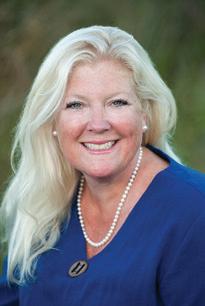













my hook and wrangle any fish I caught off the hook. I was a prissy child, if you want to know the truth.
My mother on the other hand, was an avid fisherman. There was nothing she couldn’t handle. She even snagged, reeled in and un -
hooked a huge drum with absolutely no help from anyone, even a gaffer. To see her in her baseball cap




casting a line was a great sight. She was as good if not better at fishing as my father, and he was pretty damned good,
Every once in a while, we’d still fish, and my father would let me take the wheel while we drifted. This would be in the quiet afternoon on the ebb tide, so all I had to do was aim the pulpit toward some distant tree line, and it was here that I learned I don’t get nauseated when I’m seasick; I get sleepy. The sound of water sloshing around in the bilge is like a lullaby to me, even when I was out in nine-foot swells, on a patent dredge many years later.
One of the biggest thrills for

any fisherman is that sudden jerking pull on the line when you get a strike. Reeling it in is like discovering a treasure. You don’t know what’s on the other end: a nice rock, a not nice toadfish, or even some kind of branch or snag you hooked. Landing your fish is fun. When you’re a kid, there’s always some -





one there to grab it as it comes up, lest you lose it, and I could lose it at the last minute. They can scoop it with the net or gaff it or often in my case, have my brother grab my rig and haul the fish right into the boat. I hated watching the poor fish flop around, be tossed into a basket and slowly drown in oxygen. Worse, I hated cleaning them, another task a prissy little kid had to at least watch. Cleaning fish fell to my mother, mostly because she thought no one else could do it as well as she could. And she was probably right. She could be terrifyingly efficient. She credited this to her high-school after-school job
of looking after two old maid retired teachers, and I believe her.
As the sun was setting and it was time to head in, she cleaned that boat from bow to stern. They left my brother to tie her up while he barked orders at me and went to sit on the screen porch with a cocktail.
And we would have fish for supper.

Helen Chappell is the creator of the Sam and Hollis mystery series and the Oysterback stories, as well as The Chesapeake Book of the Dead . Under her pen names, Rebecca Baldwin and Caroline Brooks, she has published a number of historical novels.














Stunning Views of San Domingo Creek from the inviting brick floored screened porch or the spacious upper-level deck. 4-bedroom, 3.5-bath home offers a generous living/dining areas overlooking the “Bay Wise” gardens – a serene oasis. Adjacent to a nature trail and waterfront park with a public landing, kayak launch, this property provides easy access to outdoor activities. Detached shed, off-street parking $1,249,000


Enchanting Eastern Shore cottage, c. 1900, beautifully updated and expanded. Nestled in the popular Village of Neavitt, close to St. Michaels, this home o ers 2-3 BRs and 2 full BA’s. The spacious kitchen, dining, and living area is perfect for entertaining guests. Enjoy the waterviews from the fabulous upperlevel deck overlooking the large backyard. Conveniently located near park and public landing. $525,000.

















Fabulous end unit condo with Choptank River & golf course views. Located in the Willow Oak building adjacent to the Hyatt Chesapeake Bay Resort, this 3rd floor corner end unit features 2 bedrooms and 2 baths (1519 sf) and sizable balcony with Choptank River & 18th Fairway views. $410,000


by Bonna L. Nelson
Funny thing about getting older, your eyesight starts getting weaker but your ability to see through people gets much better. ~ Unknown
Vision health is another factor contributing to the vim, vigor and joy of the Super Ager. We want to stay forever young, see as well as we did in our 20s. But as we age, so do our senses: hearing, vision, taste, smell, and touch. And the way the senses provide information about the world
around us changes, becoming less detailed, less focused. Though aging can affect all our senses, usually hearing and vision are most affected, according to a U.S. National Institutes of Health, Medline Plus article, Aging Changes the Senses. I was bouncing along in life and





Historic building in the heart of historic downtown Easton with high traffic count. Approximately 5600+/-sf storefront that has multiple potential uses including retail/showroom, restaurant, or office space. This beautiful and longstanding brick and mortar is right off of the Harrison St. & Dover Rd. intersection and shares the street with ice cream shop, antique dealers and the Avalon Theatre drawing in day and night time foot traffic. Second floor has classic charm with the exposed brick and metal tiled ceiling and offers potential for many different layouts.




We are proud to offer this renowned local landmark. This historic gem, built in 1790 by Easton local Benjamin Stevens, presents an exclusive opportunity to own one of the best locations in the area. Boasting central business commercial zoning, this versatile property lends itself to a multitude of uses, from luxurious office space to a charming inn/restaurant, or the restoration of its original grandeur as a residence. The property features a commercial kitchen, kitchenette, and multiple prep and storage rooms. As well as expansive gathering areas, 8 bedrooms, 7 full bathrooms, and 2 half bathrooms, encompassing over 5,700+/- square feet. The building is further enhanced by a screened porch and a second-floor balcony overlooking South Harrison Street. Nestled on a generously sized lot, the property also enjoys convenient off-street parking. Idyllically located in the heart of historic downtown Easton between the Historic Tidewater Inn, Avalon Theatre, and the renowned Academy Art Museum, this location is a cultural nexus.
| $2,250,000 | www.28SouthHarrisonStreet.com
coping well with the various changes that aging brings when I hit a brick wall over a year ago. I want to share my vision scare in the hopes that you will keep up with your yearly, or more frequent, vision exams with a vision care specialist and stay on the Super Ager path. Finding and treating vision problems early can help protect your vision, spot problems early and prevent vision loss.
I was diagnosed with a major vision challenge during a routine eye exam that could lead to blindness in one eye. I noticed that I suddenly needed readers when I previously had not. My reading vision was becoming more difficult. I took it in

stride figuring it would happen to me sometime along the way.
Having undergone Lasik vision correction surgery years ago, I had monovision. I had experienced monovision with contact lenses, one eye corrected for close sight, my left, and one for distance, my right, and was delighted with it. Lasik surgery made monovision permanent. When other friends started needing readers, I didn’t. My left eye read quite well. Now it was my turn. They call it “presbyopia.” But my condition came late. Presbyopia is the gradual loss of the eyes’ ability to focus on nearby objects, according to the Mayo Clinic. “It’s a natural, often annoying part of aging. Presbyopia usually becomes noticeable in your early to mid-40s and continues to worsen until around age 65.”
This was all new to me. When reading became more difficult, I started buying over-the-counter readers. I had fun selecting a variety of readers in scrumptious colors from the “dollar store” selections. Then I noticed that my vision strength was suddenly jumping from needing 1.00 strength for a few months to suddenly needing 2.25 and then 2.50 to see clearly, and sun glare was becoming painful even with sunglasses on. What gives? My vision changes were not gradual. Soon thereafter, during my yearly eye exam when asked to read the eye chart the letters in the center of the chart were just squiggly lines when read with my left eye with right eye




2 ACRES on the Edge of town
30603 Dover Rd. - Easton
Well built brick rancher with stunning curb appeal. 2,138 +/sq. ft. of finished living space. Lovingly cared for by its original owner.
$375,000

NEW LISTING
816 Chapel Farm Dr. - Easton
Enjoy one level living in this 3BR, 2 bath split bedroom design. Sunroom with vaulted ceiling and sliding glass door leading to the fenced-in backyard. Many upgrades have been done in the past 3 years. Owner/Agent $475,000


NEW LISTING
29381 Will St. - Easton
Spacious split level on a corner lot with finished basement, 3 or 4 bedrooms and 2 full baths. New roof, siding, gutters and downspouts.
$382,500

covered. I asked Dr. Zuleika Ghodsi, my ophthalmologist of many years, “Why the sudden deterioration of my vision?” After multiple tests Dr. Ghodsi gave me a diagnosis. “I am sorry to tell you, Mrs. Nelson, but you have a macular hole in your left eye that is causing your blurred vision.”
What a shock! I asked, “What is it?” “How did I get it?” “What do we do about it?” Like breast cancer, arthritic knees, shoulder rotator tears and myriads of other health challenges, I was ready to fight for my sight!
I learned from my research on the NIH and other websites that older adults tend to experience several common eye diseases and conditions that can lead to vision loss and blindness.
Age-related macular degeneration can harm the sharp, central vision needed to see objects clearly for
reading and driving. Treatments are available and can lower the chances of it getting worse.
Diabetic retinopathy may occur if you have diabetes. Treatments and lifestyle changes can help.
Cataracts are cloudy areas of the eye’s lens causing blurred or hazy vision. I have a tiny one. Surgery can restore good vision. I have many friends and family who have had success with surgery and see even better than before they acquired cataracts.
Glaucoma usually comes from too much fluid pressure inside the eye. Treatments can prevent vision loss and blindness.
Dry eyes are a result of tear glands not working well. Treatments are also available for this vision challenge. Many of these vision problems can be detected early on and treated in regular eye care checkups with eye care professionals, which is why eye exams are so important!
So, what is a macular hole (MH)? I discovered that it is not macular degeneration or a retinal disease. It usually occurs in women rather



than men and is another one of those aging conundrums. It is a break in the macula in the center of the eye’s light-sensitive tissue, the retina. The macula provides the sharp, central vision we need for reading, driving, and seeing fine detail.
A MH can cause blurred and distorted central vision. MHs are related to aging and usually occur in females between the ages of 60 and 70. It is like a central blind spot; peripheral vision remains normal. The vitreous fluid that fills the eye’s interior slowly shrinks and pulls away from the retinal surface, causing the hole. Nothing can be done to prevent it, but surgery can repair it.
Dr. Ghodsi immediately made an appointment for me with an excellent ophthalmologist and vitreoretinal surgeon, Dr. John Butler, with The Retina Consultants of Delmarva. I saw him within a week. The initial exam and testing took 3 hours. John, my husband, accompanied me and took notes.
Dr. Butler and staff were knowledgeable, kind and patient. He explained that I had a stage-three MH, small and operable, and that surgery was the only treatment, not drops or medications or glasses. The surgery is called a vitrectomy and can improve vision and halt the progression of the MH, which if left untreated can lead to more vision loss and blindness.

During the surgery, the vitreous gel is removed to prevent it from pulling on the retina. It is replaced with a bubble containing a mixture of air and gas. The bubble acts as an internal, temporary bandage that holds the edge of the MH in place as it heals. The 30-minute surgery would take place as soon as could be arranged and is done as an outpatient under anesthesia.
I was relieved to be in the hands of an experienced surgeon who said that his success rate was 90-96%. I was okay with having surgery, having experienced many over the years. The downside was my responsibility during post-surgery, which Dr. Butler said was as important as the surgery. My job was to lie face down 24/7! That’s right, 24 hours a day for 7




days! Impossible! But necessary! If a patient does not remain facedown post-surgery, the surgery could fail. Why? Remember the bubble? Remaining facedown allows the air bubble to gravitate to the back of the eye to pressure the hole closure. As the bubble is reabsorbed, the vitreous cavity refills with natural eye fluids and the MH seals.
Seems crazy and barbaric! You would think they would have found a better way but…in my research, including Johns Hopkins and other major eye centers, all recommend the same post-op procedure, some with fewer than 7 days, but facedown all the same.
So how does one accomplish this feat? With devices, planning, and the support of a good partner, family, and friends. Dr. Butler suggested that I rent equipment from ComfortSolutions before the surgery. The

chair, like a seated massage chair, allows one to stay seated, read, talk with family, watch TV, eat, etc.
The seated support system provides adjustments and many options that help with face down daily living. It provides ergonomic support for body, neck and face and most importantly improves chances of surgical success. It also has component for face down sleeping in bed.
Though it sounds inconceivable and overwhelming, I did it! And no, it is not comfortable and as Dr. Butler warned me, I had little sleep that week. But the surgery was a success. I remained face down 24/7. The hole closed and my eyesight, though not restored or improved centrally, will not diminish further!
I wear my now 2.75 colorful readers as needed. I can drive with my perfect right distance eye and the remaining peripheral vision in my left eye. Putting on makeup is a little tricky, but I am assisted with magnifying mirrors to look perky and not clownish.
I am thankful that Dr. Ghodsi



identified the vision problem during a routine exam. I am thankful for Dr. Butler’s steady surgical hands (we talked about travel though out the surgery, it was local anesthesia). I am thankful for my loving, caring, comforting husband and my family and friends’ support throughout. And, I am thankful for having the confidence, courage, faith, and strength to overcome this latest health challenge, get back up and carry on.
Vision wellness is a continuation of my Super Aging quest as I discussed in the June 2024 issue of the Tidewater Times and hearing wellness as presented in the July 2024 issue. The takeaway on vision wellness is to get comprehensive vision exams yearly with an eye care professional
to protect your vision, prevent vision loss, and detect problems early.
Other recommendations for healthy vision from U.S. National Institutes of Health (NIH) include: wear sunglasses with UV protection and a wide brimmed hat outdoors, make smart food choices, stay physically active, maintain a healthy weight, maintain normal blood pressure, know your family’s medical history, and manage diabetes.
Also important for vision health is to manage the time spent staring at the various screens in your life, cell, tablet, computer, television, etc. I am guilty as charged of being glued to the screen. NIH suggests that we take a break every 20 minutes and look about 20 feet away for 20 seconds to prevent eye strain. I also try to get up and move around every 30 minutes or so to keep the blood circulating and the muscles working. I also often use an under-table bicycle while browsing the web or reading a book online.
Recent uplifting advice from a 91-year-old friend included learn to laugh about your challenges. Have fun with it. For example, wear fun, cool glasses and sunglasses. And, fi nally, things are going to happen. You must fight it, move forward and stay optimistic!

Bonna L. Nelson is a Bay-area writer, columnist, photographer and world traveler. She resides in Easton with her husband, John.





































"Welcome to our Roadhouse Bar & Grill, where the open road meets mouthwatering flavors and good ol’ fashioned hospitality. In the heart of Preston, Caroline County, we are not just about great food; we’re about creating great memories" ~ Ian & Elinor Fleming


Serving Lunch 11:30 a.m. - 3 p.m. ~ Mon through Sat Serving Dinner 4 p.m. - 8 p.m. ~ Tue through ur and 4 p.m. - 9 p.m. ~ Fri and Sat 201 Main St., Preston, MD 667-342-4024 Reservations Recommended!
by Maria Grant
Easton has become a true mecca for extraordinary musical experiences. A case in point: Chesapeake Music’s upcoming concert featuring the award-winning Isidore String Quartet performing at the Ebenezer Theater on Sat., Oct. 5. The concert is the second in the 2024–2025 series of Interlude Concerts.
The Isidore String Quartet, winners of the 2023 Avery Fisher Career Grant and the 2022 14th Banff International String Quartet Competition, began as an ensemble at the Juilliard School in 2019 when their teachers recognized a certain magic about their unique sound. The quartet members are violinists Adrian Steele and Phoenix Avalon, violist Devin Moore, and cellist Joshua McClendon.
After the pandemic, the quartet reconvened at the Kneisel Hall Music Festival. Their Banff triumph resulted in extensive tours of North America and Europe, an appointment as the Peak Fellowship Ensemble in Residence at Southern Methodist University in Dallas, and a two-week residency at Banff

The award-winning Isidore String Quartet who will be performing at the Ebenezer Theater.
Centre, including a professionally produced recording.
The name Isidore pays tribute to the legendary violinist Isidore Cohen of the Juilliard String Quartet. The name also goes back in time to a Greek monk named Isidore who concocted the first genuine vodka recipe for the Grand Duchy of Moscow.
The Isidore String Quartet has
appeared in major venues in Chicago, Pittsburgh, Seattle, DC, San Antonio, Toronto and Montreal and has collaborated with a host of eminent performers. Outside the concert hall, the quartet worked with PROJECT: MUSIC HEALS
US which provides encouragement, education and healing to marginalized communities.
For Easton’s Interlude Concert, the quartet will perform the Mozart “Dissonance” Quartet, Bartok Quartet No. 2 and the Ravel Quartet. Award-winning violinist Phoenix Avalon explained that the quartet selected these three pieces because they wanted to “explore

the revolutionary sound worlds in the string quartet medium.” Avalon added that “the Mozart Quartet was truly groundbreaking for its time. The Bartok Quartet offers a folksy Hungarian experience and the Ravel Quartet has an entirely different unique French sound filled with color and rhythm.”
The Isidore String Quartet’s mission is to “cultivate joyful, accessible and intimate experiences that create community through in-depth relationships and explore the power of the collective to uplift the individual. The gloriously vital tradition of the string quartet is our playground to impact the world we live in and inspire others through the art of collaboration and play.”
Newly appointed Executive Director of the Chesapeake Music David Faleris added, “The Eastern Shore community is lucky indeed to have access to such an uplifting and joyful musical explosion of talent.”
Tickets for this moving musical experience on Oct. 5 at the intimate and acoustically excellent Ebenezer Theater in Easton are $50. Chesapeake Music also offers discounted tickets for students and music educators, as well as a “buyone-get-one” option for those who are new to Chesapeake Music and want to come with a friend. To purchase tickets for the concert, visit ChesapeakeMusic.org, and to learn more about the quartet, visit isidorestringquartet.com.







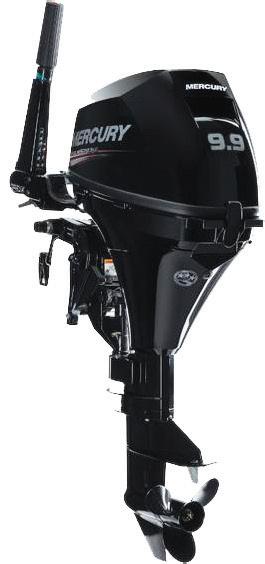



1. Sun.
2. Mon.
3. Tues.
4. Wed.
5. Thurs.
6. Fri.
7. Sat.
8. Sun.
9. Mon.
10. Tues.
11. Wed.
12. Thurs.
13. Fri.
14. Sat.
15. Sun.
16. Mon.
17. Tues.
18. Wed.
19. Thurs.
20. Fri.
21. Sat.
22. Sun.
23. Mon.
24. Tues.
25. Wed.
26. Thurs.
27. Fri.
28. Sat.
29. Sun.
30. Mon. AM
8:43 9:20 9:52 9:49 10:34 11:1712:19 12:41 1:06 1:35 2:09 2:50 3:41 4:44 5:56 7:10 8:18 9:22 10:24 11:2612:10 12:49 1:31 2:19 3:16 4:25 5:40 6:53 7:56 8:51 9:40
SHARP’S IS. LIGHT: 46 minutes before Oxford
TILGHMAN: Dogwood Harbor same as Oxford
EASTON POINT: 5 minutes after Oxford
CAMBRIDGE: 10 minutes after Oxford
CLAIBORNE: 25 minutes after Oxford
ST. MICHAELS MILES R.: 47 min. after Oxford
WYE LANDING: 1 hr. after Oxford
ANNAPOLIS: 1 hr., 29 min. after Oxford
KENT NARROWS: 1 hr., 29 min. after Oxford
CENTREVILLE LANDING: 2 hrs. after Oxford
CHESTERTOWN: 3 hrs., 44 min. after Oxford
3 month tides at www.tidewatertimes.com 3:34 4:11 4:44 5:13 5:42 6:10 6:41 7:16 7:56 8:45 9:44 10:50 11:56 12:46 1:44 2:38 3:26 4:12 4:56 5:40 6:26 7:14 8:08 9:08 10:13 11:22 12:37 1:35 2:23 3:02




When repowering, repairing, or optimizing your boat’s engine, count on Campbell’s Boatyards–certified Cummins dealer and repair station.








Monica Penwell Associate Broker
410 310-0225
mpenwell@ttrsir.com
St. Michaels Brokerage 410 745-2596

monicapenwell.sothebysrealty.com

21876 Albie Road, Sherwood, MD - This extraordinary waterfront home was artfully transformed from a 1945 bungalow into a contemporary retreat, featuring an open concept living space incorporating the living room, dining area and kitchen, plus two bedrooms and two baths. The separate studio with half bath, offers many possibilities including a home office, art studio, or guest quarters.
List - $1,165,000 · Sold Price - $1,250,000

With spectacular water views of the Miles River, and over 500 ft. of protected waterfront, this historic home has been completely updated and renovated including Geo thermal heating, three En-suite bedrooms, and designer kitchen. Original hardwood floors and 10 ft. ceilings throughout the first floor, this home has retained its charm, including the screen porch overlooking the water.
List - $2,195,000 · Sold Price - $2,150,000
*Represented Buyer

In the water access community of Deep Harbour Farm, this spacious home offers comfort, style and functionality. On just over 2 acres and minutes from St. Michaels and Tilghman, this property features 3 bedrooms, 2.5 baths, formal living room, separate dining room, family room, rear decks overlooking the in-ground pool and an oversized detached garage with workshop.
List - $625,000 · Sold Price - $625,000

On the tranquil shores of Duck Cove, this charming water view home offers many possibilities. With its expansive open living space designed to maximize the stunning views and natural light, this charming home is perfect for the full-time owner or someone looking for a weekend get-a-way. The large rear deck provides serene water views. With sewer services coming to Neavitt, this charming in-town home offers numerous possibilities. List Price - $395,000
by Tracey F. Johns
Vanessa Genova never thought she’d return to her family’s business on Maryland’s Eastern Shore where she baked and hustled brownies in her teens to pay for her first car. That same car later took her to Brooklyn, New York, where she earned a master of science in nutrition and dietetics from New York University. She enjoyed the city
life, worked as a clinical dietitian, landed a good job, got married and became a mom.
That’s when it hit her. Her young life in Cambridge and Easton included a grandmother and aunt helping raise her and her brothers, Anthony and Marco, while her parents, Joann and Tony Genova, ran Rusticana Pizza and invested



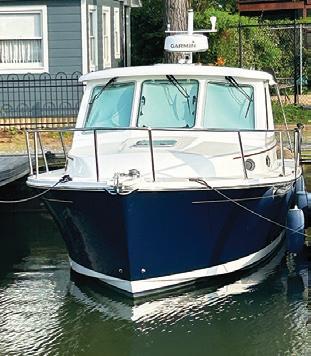
in refurbishing workforce housing. So, she quit her job and moved to Trappe with her family.

Tony has been a staple at Rusticana in Easton, although these days he’s enjoying more time being Nonno or granddad. You can still find Tony near the pizza ovens on some days, and you can always find his name inked up on a loyal worker’s arm with a slice of pizza from when a bunch of them honored him with tattoos a few years back.
Fast forward a decade or so to today, and Vanessa is back—baking those same signature brownies each morning among her other roles now helping to run two restaurants with her brother, Anthony. Marco, 32, is the youngest sibling and is a computer engineer


living in Brooklyn, New York.
Now, Vanessa says her brownie baking supports what she calls her ‘diaper fund’ for her three-year-old son, Nico.
Mario’s grandparents, Gina and Mario Persico, Rusticana Pizza has become a beloved place to grab a great meal, connect with friends, and make memories. Italian Roots
“I never imagined I’d be back here,” she says. “And it was the best decision I’ve made. “It’s not just being closer to family; there’s a unique satisfaction in seeing people enjoy the food we make.”
You can see by the warmth in her eyes and smile that this sentiment is straight from her heart and cultivated over half a century by her Italian ancestors serving slices of tradition and hospitality. Established by Anthony, Vanessa, and


“My grandparents opened the first Rusticana in Brooklyn, New York, back in 1969,” says Vanessa, the middle child. “They brought
their passion for authentic Italian pizza to America, and my parents continued that legacy when they moved to Maryland.”
The family’s journey is a tale of hard work, resilience and a deep


love for the craft. Anthony Genova, 41, the eldest sibling, recalls the family’s dedication to their business. “Our dad—or Tony, as the world knows him—moved from Italy and always believed in following the family’s roots in restaurants. He worked tirelessly to make Rusticana a place where people could enjoy an authentic taste of Italy,” he says.
Anthony, who graduated with a mechanical engineering degree from Polytechnic University, never envisioned himself in the pizza business either. “I thought I’d be working on engineering projects, but there’s something incredibly rewarding about running our own business,” he says. “It’s about creat-

Lona has lived on the Eastern Shore her entire life. Her local knowledge and connections make her an expert in the area. Providing customer service with honesty and integrity is important to her! See my Zillow for current listings and reviews 410.310.0222 800.913.4326

lstodd11@outlook.com
Lona is a 3rd generation realtor in the family business with her father as the current broker since 1978.
Italian Roots
ing something that people love and being part of the community.”
Now, his wife, Katie, who is from Thailand, has joined the team, adding to what Vanessa calls a diverse ‘girl power’ behind the counter at Rusticana.
Rusticana’s menu, which includes homemade lasagna and freshly assembled cannolis, has remained a staple for locals. The original pizza recipe, unchanged since its inception, is a testament to the family’s commitment to tradition. “We source our ingredients carefully and keep everything as authentic as possible,” says Anthony.
That includes a tomato sauce that starts with fresh tomatoes, onions,
spices, and a bunch of secret ingredients that have garnered generations of pizza fans dining, taking out, or ordering delivery from Rusticana Pizza. The restaurants rely on a prep center in Trappe to keep up with demand and employ about 30 people year-round.
The family’s journey from Brooklyn to Maryland wasn’t just about changing locations; it was about expanding their dream. After opening their first Maryland location in Cambridge, they soon expanded to Easton and beyond. “At one point, Papà was running up to five restaurants simultaneously,” Vanessa recalls. “It was challenging, but it was also a labor of love.”
The Genova family’s story is also one of adaptation and moderniza-


Italian Roots

tion. “When COVID-19 hit, we had to rethink our business model. We introduced delivery services and embraced online platforms to survive,” says Vanessa. “It was tough, but our innovation paid off.”
Anthony adds, “We’ve learned to blend our traditional methods with new technologies. From expanding our delivery services to connecting our menu with various online platforms, we’ve modernized while staying true to our roots.”
The Genova family’s commitment extends beyond their immediate family. Their staff, many of whom have been with them for years, are treated as part of the family. “We have employees who have been with us for more than 20 years,” says Anthony. “We value their dedication and provide the same respect we give each other.”
Vanessa agrees, “We know that
happy employees make for a better business. We try to accommodate their needs and ensure they feel valued. It’s all about mutual respect.”
The family also continues to support the local community by giving back, supporting law enforcement, participating in local fundraisers, sponsoring local sports teams and mentoring young people with job opportunities.
As the Genova family continues to serve the community, their legacy is one of passion, dedication and a deep connection to their Italian roots. “We love what we do,” says Vanessa. “It’s about more than just making pizza. It’s about family, community and continuing a tradition that started more than 50 years ago.”
“Family isn’t just the people that


are your bloodline; it’s the people that are running the business and making it work,” said Anthony Genova, reflecting on the familial atmosphere that defines Rusticana Pizza. “We treat everyone here like co-workers, not employees. We build relationships, provide mentorship and friendship, and we work well together as a team.”
The Genovas are hands-on in every aspect of the business. From making their pizza dough and sauce to hand-cutting fresh ingredients daily, they maintain a high standard of quality. Vanessa shared, “We still use fresh ingredients. We grate our cheese, make our dough,
and even make our own sausage. It’s all about keeping it authentic and consistent.”

On a typical Friday, the pizzeria is abuzz with activity, serving countless pepperoni pizzas, cheesesteaks, and their popular wings. Their innovative Ranchero Pizza, topped with ranch, bacon, grilled
















chicken, mozzarella and cheddar, has also become a crowd favorite.
“We’ve fine-tuned our glutenfree crust to a delicious point. It’s very popular now,” Vanessa added. “Healthy choices also include our grilled chicken salad, veggie pizza slice, and the chicken cheesesteak loaded with lots of grilled and raw vegetables.”
The Genovas are planning an expansion to their Easton location, with plans to expand the kitchen and enclose a current outdoor patio to add more dining space. “We’re working on the initial stages now, hopefully starting in the winter,” said Anthony. “It’s all about providing a better experience for our customers.”
Anthony’s decision to return to the family business after studying engineering stemmed from a desire for more freedom and a deep connection to his roots. “I wanted the freedom to grow as I want and to be able to visit Italy whenever I want,” he said. “It’s about keeping up with the family name and tradition.”
Vanessa echoed this sentiment, noting the joy they find in upholding their family legacy. “It’s the tradition that gets me going. It’s hard work, but it’s fulfilling.”
For the Genova family, Rusticana Pizza is more than just a busi-
ness; it’s a way of life. “We have customers who come from as far as Annapolis and Delaware just to eat here,” Vanessa said. “People come back year after year because it’s a taste of home.”
As they continue to grow and adapt, one thing remains constant: their commitment to family and quality. “We make everything fresh every day,” said Anthony. “It’s a lot of work, but it’s worth it to see our customers happy.”
With plans for expansion and a firm dedication to their craft, the Genova family is poised to keep Rusticana Pizza a beloved fixture in the community for years to come.
#####
Rusticana Pizza 810 Dover Road Easton, MD, 21601 410-820-5110 2831 Ocean Gateway Cambridge MD, 21613 410-228-2399 www.rusticanapizza.com

Tracey Johns has worked in communications, marketing and business management for more than 30 years, including non-profit leadership. Tracey’s work is focused on public and constituent relations, along with communication strategies, positioning and brand development and project management.













Each year in September, the Talbot County community comes together to celebrate the life and works of revered abolitionist and orator Frederick Douglass, who was born into slavery near Easton. This year’s Frederick Douglass Day will take place on Sat., Sept 28th in Easton’s historic downtown. The celebration will include activities for all ages and promises a day full of entertainment and education.
Frederick Douglass Day, then known as “Douglass Returns,” began in 2011 at the Chesapeake Bay Maritime Museum. Its original purpose was to raise funds to build a statue of Douglass, which has now stood in front of the Talbot County Courthouse for thirteen years. The unveiling ceremony for the statue was attended by the Mayor of Easton, the Governor of Maryland, and several local community leaders. Following the success of this celebration, the decision was made to have an annual Frederick Douglass Day, which has continued since; the holiday even continued through the COVID-19 pandemic, although done virtually in 2020 and 2021.
Frederick Douglass Day 2024 will kick off with a parade from Easton Elementary School to the Talbot County Courthouse, led by Grand Marshall Walter Black and

the family of the late Eric Lowery, a founding member of the Frederick Douglass Honor Society. The parade will begin at 10 a.m. and include a banner carried by Carolyn and Ryan Hayman, a color guard presented by the Easton High School NJROTC, the school bands of Easton High and Easton Middle schools, the Mayor of Easton Megan Cook, the superintendent of Talbot County Public Schools Dr. Sharon Pepukayi and many more.
Following the parade, there will be a Welcome Ceremony on the front lawn of the courthouse, beginning at 10:30 a.m. and presented by MC Gabriella Thompson. The ceremony will begin with an invo -
cation, as well as a presentation of colors by the Easton High School NJROTC. The pledge of allegiance will be led by BAAM (Building African American Minds), a local nonprofit which provides support and academic resources for young African American students. Music for the ceremony will be provided by the Easton Middle and High school bands, Melissa Wise, Ian Young and Randy Welch. Also included will be a recitation of one of Douglass’ famed speeches, a poetry reading and speakers including Mayor Megan Cook and representatives of the Talbot County Council, Talbot County Public Schools, Talbot County Free Library and Frederick Douglass Honor Society.
From 11 a.m. to 3 p.m., a Children’s Village will be held on the lawn of the Talbot County Free Library located on Dover St. This event will feature readings by Shaunah Beulah, manager of the St. Michael’s Free Library, as well as local author Timothy Young. There will also be Frederick Douglass-themed coloring books, games, a prize wheel, face painting educational activities and a giveaway of Baltimore Ravens silicone wristbands. Also beginning at 11 a.m., the Talbot County Free Library’s Frederick Douglass room will display a series of multimedia panels with historical information about Douglass and
his family, as well as items owned by Douglass, including his Bible and derby hat, courtesy of the National Park Service.
Beginning at noon, the Frederick Douglass Geocaching Trail, created by Autumn Redman and Girl Scouts troop #1308, will be available to visitors. Geocaching, an outdoor activity that involves using a map or mobile device to locate “caches” at specific locations marked by coordinates, was invented in 2000 and has increased in popularity in recent years. Participants can visit the Free Library to pick up a passport, including a map and instructions, so they may locate caches containing historical information about Douglass’ life in Talbot County. After completing the trail, participants will receive a commemorative coin and photograph. The celebration will also feature



an entertainment stage located at the intersection of Dover and West streets. The live entertainment will begin at noon and will include many artists, such as local hip-hop artist Baba Bomani, who uses rap music to educate and entertain; Bomani regularly provides workshops and assemblies to teach how hip-hop can be a valuable tool for education. Also performing will be Melissa Wise, a classically trained singer from Cambridge who is talented in various genres including classical music, opera, hymns and spirituals and jazz. Wise also teaches choral music at Cambridge-South Dorchester High School. Other performers include Isaiah Robinson, a singer and student at Chesapeake College, Deleon Foster, who will read an original poem about Douglass, Stefany Sofia Fernandez Hernandez, a singer from Easton Middle School whose voice has been described as “angelic,” and Ian Young, a professionally trained operatic singer who grew up in Easton. Close to the entertainment stage, there will be a marketplace featuring local food vendors and retailers as well as non-profit organizations.
The main educational event of the day will be a lecture by Dr. Keidrick J. Roy, an intellectual historian and political theorist at Harvard University’s Society of

Fellows. Roy earned his Ph.D. at Harvard with his award-winning dissertation, Jefferson’s Map, Douglass’s Territory: The Black Reconstruction of Enlightenment in America, 1773-1865. Roy’s book, American Dark Age: Racial Feudalism and the Rise of Black Liberalism, focuses on the resemblance between racial hierarchy in early America and feudalism in medieval Europe, and how this relationship was challenged by black liberal thinkers. He will sign copies of the book after the lecture.
All in all, Frederick Douglass Day 2024 will be a day filled with activities the whole community is sure to enjoy. Mark your calendars for Sat., Sept. 28th, and be sure not to miss any of the exciting and informative opportunities that await. Celebrate and honor the memory of Frederick Douglass, and the history of Talbot County, which connects us all together.











This year’s Chesapeake Film Festival received over 200 film submissions for consideration from 15 states and five countries. “Now in its 17th year, the festival’s reputation has grown, submissions have increased year after year and the job of curating a final film line up to ensure an entertaining and engaging event becomes both a delight and a challenge,” states Cid Collins Walker, executive director of Chesapeake Film Festival.
The three-day festival—in historic downtown Easton from Sept. 27–29—is organized and presented in programming blocks for feature, environmental, documentaries, shorts, animation and student films. In addition to the films, there are live discussion panels with directors and producers, an engaging, expert-led session on the Art of Storytelling, VIP events and much more. Walker encourages all film buffs and aspiring filmmakers to explore this year’s final line up of selected films and associated events at chesapeakefilmfestival.com. Sneak Peak
Selected Film Highlights
Call Me Dancer —Documentary feature, USA – Opening Film,

Friday, Sept. 27—directed by Leslie Shampaine and Pip Gilmour. An inspiring journey with Manish, a young and talented street dancer from the City of Dreams, Mumbai, as he struggles to become a professional dancer against all odds. Director Q & A will follow the screening.
Selections from the festival’s short film block, “A Tapestry of
Vignettes,” Friday, Sept. 27 at the Ebenezer Theater, 17 S. Washington Street, Easton
Special Screening — Racing Rivals: Log Canoes of Chesapeake Bay introduces this uniquely Chesapeake sport and the passionate sailors who preserve the tradition while vying for coveted trophies. Senior Producer, Sarah Sampson of Maryland Public Television.
Dear Josephine —Documentary Short, USA—directed by Amber Monet. This spotlight on Maryland/ Maryland Premiere explores the career of global icon Josephine Baker and her unexpected and unexplored contributions to the evolution of classical ballet.
Losing Blue — Environmental Short, Canada – directed by Leanne Allison—explores the profound concept of losing a color, particularly focusing on the disappearance of the unique blues found in glacierfed alpine lakes. These mesmerizing hues are now under threat due to climate change. Through stunning cinematography, the film serves as a metaphor for the broader impacts of environmental degradation.
Q & As with directors and producers will follow the screenings. Selections from Environmental Films Opening Night, Fri., Sept. 27—Sponsored by The Nature Conservancy—“A Lens on
Chesapeake Rhythms —Environmental Short, USA – World Premiere—directed by local filmmaker Dave Harp and writer Tom Horton. A magnificent celebration of the native trumpet swans who migrate to the marshes of the Eastern Shore.
Diary of an Elephant Orphan—Documentary Feature, South Africa – directed by Hermien Roelvert-Van Gils—An inspiring journey following the rehabilitation of a baby elephant at a unique orphanage for these vulnerable animals. Baby Khanyisa, a threemonth-old albino elephant calf, becomes a focal point for hope for sustaining the elephant population in South Africa.









Chesapeake Film Festival
Q & As with distributors, producers and directors will follow the screenings.
Selections from Narrative & Documentary Features— “Recollections & Realizing Dreams,” Sat., Sept. 28 at the Ebenezer Theater
ImPossible —Narrative Feature, USA directed by Seckeita Lewis—A man with big dreams is diagnosed with a life-threatening illness and forms an unbreakable bond with a widowed fast food worker to do the impossible: transform his life and pursue his passion of becoming a police officer.
The Genius of Gianni Versace Alive —Documentary Feature, USA—directed by Salvatore V. Zannino. An vibrant exploration of the great contributions of the fashion designer Gianni Versace to the film and fashion industry.
Jamie Wyeth and the Unflinching Eye —Documentary Feature, USA—directed by Glenn Holsten. Part of a three-generation dynasty of painters, Jamie Wyeth has carved out a singular path in the art world. His subjects include John F. Kennedy, Andy Warhol, Arnold Schwarzenegger, Rudolf Nureyev, animals on his farm and on islands of Maine—all through his unique, and sometimes unsettling, lens.
Q & As with directors and producers will follow these screenings.
Tickets are now available online at chesapeakefilmfestival.com. VIP tickets include an invitation to the Opening Night VIP Event with visiting producers and filmmakers in addition to unlimited access to all films and events.
September 12 —Environmental films from 4 to 6 p.m. & 7 to 9 p.m. at the Garfield Center in Chestertown. Tickets may be purchased at the Garfield Center or online at www.garfieldcenter.org/gcaevent/ chesapeake-film-festival-presentsfragile-rivers-fertile-lands/
September 27 —Opening Day Film Call Me Dancer at noon with films to 5:30 p.m. VIP Reception, Ebenezer Theater, catered by Bluepoint Hospitality – 7:30 p.m. Environmental Films – tickets and information visit chesapeakefilmfestival.com
September 28 & 29 —Full days/nights of more than 30 carefully curated independent films beginning at noon at the Ebenezer Theater. Tickets and information for all films visit chesapeakefilmfestival.com
September 29 , The Art of Storytelling Panel & Workshop. Talbot County Free Library at 10:30 a.m. –Free Event
The Chesapeake Film Festival is generously supported by the Mr. and Mrs. Paul Prager on behalf of Bluepoint Hospitality, The Nature Conservancy, Shared Earth Foun-



Chesapeake Film Festival dation, Maryland Humanities, Maryland State Arts Council, MidShore Community Foundation & Artistic Insight’s Fund, ShoreRivers, Talbot Arts, the Maryland Film Office, Choptank Electric Trust, Shore United Bank, Talbot County Department of Tourism, Richard and Beverly Tilghman, U.S. Small Business Administration and Easton Utilities.
The MD Humanities Grant has been financed in part with State Funds from the Maryland Historical Trust, an agency of the Maryland Department of Planning which is part of the State of Maryland.












The history of Queen Anne’s County dates back to the earliest Colonial settlements in Maryland. Small hamlets began appearing in the northern portion of the county in the 1600s. Early communities grew up around transportation routes, the rivers and streams, and then roads and eventually railroads. Small towns were centers of economic and social activity and evolved over the years from thriving centers of tobacco trade to communities boosted by the railroad boom. The county is named for Queen Anne of Great Britain, who reigned when the county was established in 1706.
Queenstown was the original county seat when Queen Anne’s County was created, but that designation was passed on to Centreville in 1782. It’s location was important during the 18th century, because it is near a creek that, during that time, could be navigated by tradesmen. A hub for shipping and receiving, Queenstown was attacked by English troops during the War of 1812.
Construction of the Federal-style courthouse in Centreville began in 1791 and is the oldest courthouse in continuous use in the state of Maryland. Today, Centreville is the largest town in Queen Anne’s County. With its relaxed lifestyle and tree-lined streets, it is a classic example of small town America.
The Stevensville Historic District, also known as Historic Stevensville, is a national historic district in downtown Stevensville, Queen Anne’s County. It contains roughly 100 historic structures, and is listed on the National Register of Historic Places. It is located primarily along East Main Street, a portion of Love Point Road, and a former section of Cockey Lane.
The Chesapeake Heritage and Visitor Center in Chester at Kent Narrows provides and overview of the Chesapeake region’s heritage, resources and culture. The Chesapeake Heritage and Visitor Center serves as Queen Anne’s County’s official welcome center.
Queen Anne’s County is also home to the Chesapeake Bay Environmental Center (formerly Horsehead Wetland Center), located in Grasonville. The CBEC is a 500-acre preserve just 15 minutes from the Chesapeake Bay Bridge. Over 200 species of birds have been recorded in the area.
Embraced by miles of scenic Chesapeake Bay waterways and graced with acres of pastoral rural landscape, Queen Anne’s County offers a relaxing environment for visitors and locals alike.
For more information about Queen Anne’s County, visit www.qac.org .


Kent County is a treasury of early American history. Its principal towns and back roads abound with beautiful old homes and historic landmarks.
The area was first explored by Captain John Smith in 1608. Kent County was founded in 1642 and named for the shire in England that was the home of many of Kent’s earliest colonists. When the first legislature assembled in 1649, Kent County was one of two counties in the colony, thus making it the oldest on the Eastern Shore. It extended from Kent Island to the present boundary.
The first settlement, New Yarmouth, thrived for a time and, until the founding of Chestertown, was the area’s economic, social and religious center.
Chestertown, the county seat, was founded in 1706 and served as a port of entry during colonial times. A town rich in history, its attractions include a blend of past and present. Its brick sidewalks and attractive antiques stores, restaurants and inns beckon all to wander through the historic district and enjoy homes and places with architecture ranging from the Georgian mansions of wealthy colonial merchants to the elaborate style of the Victorian era.
Second largest district of restored 18th-century homes in Maryland, Chestertown is also home to Washington College, the nation’s tenth oldest liberal arts college, founded in 1782. Washington College was also the only college that was given permission by George Washington for the use of his name, as well as given a personal donation of money.
The beauty of the Eastern Shore and its waterways, the opportunity for boating and recreation, the tranquility of a rural setting and the ambiance of living history offer both visitors and residents a variety of pleasing experiences. A wealth of events and local entertainment make a visit to Chestertown special at any time of the year.
For more information about events and attractions in Kent County, contact the Kent County Visitor Center at 410-778-0416, visit www. kentcounty.com or e-mail tourism@kentcounty.com . For information about the Historical Society of Kent County, call 410-778-3499 or visit www.kentcountyhistory.org/geddes.php . For information specific to Chestertown visit www.chestertown.com .



Who says you can’t have a Contemporary Kitchen in a Traditional Home? By choosing wood finishes, adding glass elements, and re-using the existing apron-front sink, this kitchen and breakfast area stands out in design without harshly juxtaposing the rest of the house’s style. The same cabinetry was used in both areas of this open-concept room, but adding a black granite waterfall top begins to transition you away from the mostly-white kitchen and into the rest of the living space in the home. If you like the look of a sleek and modern kitchen, but worry about how it will blend in your home, let us be the experts.

Caroline County is the very definition of a rural community. For more than 300 years, the county’s economy has been based on “market” agriculture.
Caroline County was created in 1773 from Dorchester and Queen Anne’s counties. The county was named for Lady Caroline Eden, the wife of Maryland’s last colonial governor, Robert Eden (1741-1784).
Denton, the county seat, was situated on a point between two ferry boat landings. Much of the business district in Denton was wiped out by the fire of 1863.
Following the Civil War, Denton’s location about fifty miles up the Choptank River from the Chesapeake Bay enabled it to become an important shipping point for agricultural products. Denton became a regular port-ofcall for Baltimore-based steamer lines in the latter half of the 19th century.
Preston was the site of three Underground Railroad stations during the 1840s and 1850s. One of those stations was operated by Harriet Tubman’s parents, Benjamin and Harriet Ross. When Tubman’s parents were exposed by a traitor, she smuggled them to safety in Wilmington, Delaware.
Linchester Mill, just east of Preston, can be traced back to 1681, and possibly as early as 1670. The mill is the last of 26 water-powered mills to operate in Caroline County and is currently being restored. The long-term goals include rebuilding the millpond, rehabilitating the mill equipment, restoring the miller’s dwelling, and opening the historic mill on a scheduled basis.
Federalsburg is located on Marshyhope Creek in the southern-most part of Caroline County. Agriculture is still a major portion of the industry in the area; however, Federalsburg is rapidly being discovered and there is a noticeable influx of people, expansion and development. Ridgely has found a niche as the “Strawberry Capital of the World.” The present streetscape, lined with stately Victorian homes, reflects the transient prosperity during the countywide canning boom (1895-1919). Hanover Foods, formerly an enterprise of Saulsbury Bros. Inc., for more than 100 years, is the last of more than 250 food processors that once operated in the Caroline County region.
Points of interest in Caroline County include the Museum of Rural Life in Denton, Adkins Arboretum near Ridgely, and the Mason-Dixon Crown Stone in Marydel. To contact the Caroline County Office of Tourism, call 410-479-0655 or visit their website at www.tourcaroline.com .







The County Seat of Talbot County. Established around early religious settlements and a court of law, Historic Downtown Easton is today a centerpiece of fine specialty shops, business and cultural activities, unique restaurants, and architectural fascination. Treelined streets are graced with various period structures and remarkable homes, carefully preserved or restored. Because of its historical significance, historic Easton has earned distinction as the “Colonial Capitol of the Eastern Shore” and was honored as number eight in the book “The 100 Best Small Towns in America.” With a population of over 16,500, Easton offers the best of many worlds including access to large metropolitan areas like Baltimore, Annapolis, Washington, and Wilmington. For a walking tour and more history visit https:// tidewatertimes.com/travel-tourism/easton-maryland/.






Dorchester County is known as the Heart of the Chesapeake. It is rich in Chesapeake Bay history, folklore and tradition. With 1,700 miles of shoreline (more than any other Maryland county), marshlands, working boats, quaint waterfront towns and villages among fertile farm fields – much still exists of what is the authentic Eastern Shore landscape and traditional way of life along the Chesapeake.
For more information about Dorchester County visit https://tidewatertimes.com/travel-tourism/dorchester/.









Are you tired of spending your weekends battling unruly grass and overgrown shrubs? Look no further! Sanchez Lawn Management is your one-stop solution for all your property management needs.
• Grass cutting
• Mulching
• Power washing
• Leaf removal
• Estate management
We're here to turn your lawn into a verdant oasis you can be proud of. Our team of experienced professionals is dedicated to providing quality service. Whether you're in need of routine maintenance or a complete lawn makeover, we've got you covered. At Sanchez Lawn Management, we understand that your lawn is more than just grass—it's a reflection of your home and lifestyle. That's why we go above and beyond to deliver exceptional results that exceed your expectations.
Ready to experience the difference with Sanchez Lawn Management? Let us help you achieve the lawn of your dreams! We’re just a phone call away. 410-253-4906
by K. Marc Teffeau, Ph.D.

With the cooler days in September, getting out in the garden and landscape is more enjoyable. Activities include cultivating flower beds, the vegetable garden, small fruit plantings, and lawn care. September is an excellent time to renovate and establish new pe -
rennial flower beds. Dig, divide and replant overcrowded beds of iris, daylilies, hostas, Shasta daisies and perennial phlox. Improve the soil by spreading a liberal amount of organic matter like compost and bulb or a 1-2-2 ration fertilizer like 5-10-10 evenly over the



area. Mix this into the soil at least 6 to 8 inches deep. Space the plant divisions at least 1 foot apart in all directions so root competition will not be a problem for several years. Remember to add daylilies to the plants in the perennial beds for many years of beautiful flowering. Modern hybrids are available in many colors and grow from 2 to 6 feet tall. American-grown hybrid varieties have less trouble with virus disease than the old species types. Consider a mixed planting of early, mid-season and lateseason flowering lilies to prolong the flower display. Also, add some reblooming daylilies that will give you both a spring and late summer color; a common and popular variety of a rebloomer is the yellowflowered Stella d’Oro.
Mums are considered the “Queen of the Fall Flowers.” Many flower types and colors are due to extensive plant breeding over the last 60 years or more. Chrysanthemums are used in many ways in the landscape. Hardy mums add color to your landscape while filling the gap between summer annuals and winter pansies. They do great as container plants, giving a burst of color to the porch and patio. Grouping and planting them in the flower bed can be a color focal point. Using them as potted plants with other fall decorations like pumpkins and gourds can also be a highlight on the porch.



As with many perennials, chrysanthemums are easy to grow. They have the same soil and light requirements as other perennials. For best flowering, they need to be in full sun. They will tolerate different soil types but must be well drained. They prefer fertile, well-drained soil that is high in organic matter. Mums grow best in a soil pH of 6 to 7. Keep them wellwatered, but don’t overwater fall plants.
When planting your fall mums,

dig a hole twice as big across and the exact size depth of the root ball. When you buy the mums, they may be a little pot bound. Spread the roots to encourage rooting and fill them with soil from the hole and some organic material like compost. Fall mums do not need to be fertilized at planting. Lightly mulch over the planting area to help keep the soil moist and weeds down.
If you are planting containergrown mums in the flower bed as “permanent” perennials, you must do it from September to early October. Planting now will ensure they have enough time to establish a sound root system before the soil gets cold. After the flowers and foliage have died back, carefully cut the spent flowers and stems down to the soil level for the winter. When the soil starts to warm up in spring, new foliage will begin to appear from the crown of the plant.

The key to getting the mum to flower the following fall is pinching. You must pinch off new growth






if you are growing your mums as a perennial. From when the plant is 6 to 8 inches tall until early July, pinch the top half to one inch of new growth every four weeks. When they are tall again in early August, cut them back to four inches. As with most perennials, hardy mums need to be divided every few years. Many gardeners buy potted

mums and use them as annuals to give their landscape the fall color “punch.” After flowering, they are discarded in the trash. If you use mums as fall annuals, they do not need to be fertilized. The most essential care practice is ensuring they are well watered but not drowned. An easy way to determine if the container mum needs to be watered is to pick up the pot. If it is light in weight, it is time to water. Also, it is essential to ensure that the drainage holes in the bottom of the pot are not blocked by decorative foil if the pot is wrapped.
Of course, we must remember to plant spring-flowering bulbs. Whether you are planting tulips, daffodils or hyacinths, remember
Custom Yearly Programs



Disease and Fungal Control Soil Amendments Overseeding Aeration


Complete Lawn Renovations Grading

that a mass planting of one flower type or color will produce a better effect than a mixture of many colors. Flowers of bulbs stand out more vividly if displayed against a contrasting background. For example, white hyacinths among English ivy, yellow daffodils against a ‘Burford’ holly hedge or red tulips towering over a carpet of yellow pansies.

Sowing seeds of hardy annuals, such as sweet alyssum, pinks and sweet peas, now will give the seedlings time to get established and develop sound root systems before the coldest part of winter. This gives them a head start on growth and flowering next spring.
September is a great time to plant shrubs and trees. By planting in fall, your plants avoid the stressful sum-





mer heat during establishment and have time to form sufficient root systems before winter dormancy.
For established deciduous trees and shrubs, wait for their leaves to drop before fertilizing them. Leaf drop signals dormancy when no new growth is stimulated and might not harden off before cold temperatures. However, roots are active until the soil temperature drops below 40 degrees F, so the plants will take up and use nutrients to develop a more robust root system.
Also, plants should be allowed to finish their summer growth cycle. Never encourage growth with excessive pruning at this time, as plants will quickly delay their hardening process that has already begun in anticipation of winter several months ahead. New growth can be easily injured by an early freeze. Avoid pruning spring-flowering shrubs like azaleas, lilacs and forsythia. If you prune in September, you will remove the flower buds for next year’s floral display. The only pruning I recommend on these plants at this time is the removal of dead branches.
Remember the vegetable garden. If you haven’t already, in early September, sow some lettuce, kale, spinach and other greens seeds. They will come up and give you a nice basis for salads later on in October. Seed root crops like beets,
carrots, turnips and parsnips. These crops might not get big in the fall, but they do overwinter. If you cover them with some straw, you can harvest them next spring.
Harvesting some crops in fall is nice, however, because these root crops don’t get big and stay tender.
September is a good time to propagate herbs by stem cuttings if you want to bring some of the plants inside for a source of fresh herbs for the winter. Check to ensure those cuttings are insect- and diseasefree before cutting and propagating. Herb leaves are most intensely flavored right before the plant blooms. Snip foliage in the morning after the dew has dried and prune out the flowering parts so the nutrients going to the reproductive part of the plant can be used by the leaves. Pick herbs for drying or freezing now while they are at their peak of flavor.
Your turf areas may need some renovation and renewal after this past summer. September is an excellent time to add lime to the yard. A fall application gives the lime several months to break down before the spring growing season. Liming is one of the least expensive practices that you can do that will yield the most results in the long run. Our cool season turfgrasses, such as the improved turf type tall fescue, do best at a soil pH of 6.0 to 6.5. Since many of our soils here on the ’Shore are naturally clay-based,
they naturally have a lower pH. If I had the choice between fertilizing and applying lime, I would always apply lime—if the soil test indicates it is needed.
Soil testing your lawn is like getting a blood test during a medical checkup. It establishes a baseline for the soil’s pH and nutrient levels. A soil test is a must before you lime and fertilize your lawn. A list of regional commercial soil testing labs can be found at the Univ. of Maryland Home and Garden Information Center at hgic.umd. I recommend soil testing lawns every three to four years. If you are hiring a commercial lawn care company to renovate or reseed your lawn area, insist that a soil test be done before they begin to apply fertilizer and lime.
A correct lime application to your lawn based on a soil test will maintain a proper pH for up to six years, possibly more, depending upon your soil type and how often you apply fertilizer. The rate at which

the pH falls depends mainly on how much nitrogen fertilizer you use annually. The less fertilizer you apply, the slower the pH drops. An annual application of lime is unnecessary and can push your soil pH too high and make other soil nutrients unavailable to the turfgrass.
Limestone may be applied as a finely ground powder or pelletized form. You want to use agricultural lime (dolomitic or calcitic) and not burnt or hydrated lime. These last two forms of lime are caustic, resulting in a quick but not long-lasting pH change. Agricultural lime is safe and non-toxic to plants, people, or pets. It is simple to get uniform coverage with powdered lime by spreading half in one direction and then spreading the other half in a perpendicular (crisscross) pattern.
Pelletized lime is easier to handle and spread and doesn’t produce irritating dust, but it may not give uniform results. If you are seeding or reseeding a lawn, pelletized lime should be applied to the soil surface and watered in before tilling. If you are liming an existing lawn, watch the weather report and try to lime a day or two before rain is predicted.
Happy Gardening!

Marc Teffeau retired as Director of Research and Regulatory Affairs at the American Nursery and Landscape Association in Washington, D.C. He now lives in Georgia with his wife, Linda.




On the broad Miles River, with its picturesque tree-lined streets and beautiful harbor, St. Michaels has been a haven for boats plying the Chesapeake and its inlets since the earliest days. Here, some of the handsomest models of the Bay craft, such as canoes, bugeyes, pungys and some famous Baltimore Clippers, were designed and built. The Church, named “St. Michael’s,” was the first building erected (about 1677) and around it clustered the town that took its name.
For a walking tour and more history of the St. Michaels area visit https://tidewatertimes.com/travel-tourism/st-michaels-maryland/.






by A.M. Foley
Which voyage is fictional: a three-hour cruise on the Minnow, or crossing the Atlantic in a concrete ship? Am I the only one around who never knew there actually are concrete ships? Apparently they date way back to 1848, when a Frenchman built a dingy he exhibited in Paris at Exposition Universalle. The first American concrete
ship launched in 1918 at Oakland, California, aptly christened SS Faith . She was scrapped at Cuba three years later.
I only recently learned from my friend Jeanne that an entire fleet of concrete cargo ships sits right off Virginia’s Eastern Shore. They sank (intentionally!) in 1948, as a breakwater to protect the ter -

Constructed by the San Francisco Shipbuilding Company in 1918, the SS Faith was the first concrete ship built in the United States. The idea of concrete ships was resurrected in 1942 due to the exigencies of war.



minal of the late, lamented Cape Charles to Little Creek ferry. When the Chesapeake Bay Bridge-Tunnel opened in 1964, making a car ferry seem obsolete, the ship that crossed the Chesapeake departed to Lewes to cross the Delaware.
The breakwater remained and became incorporated into Kiptopeke State Park, where it protects the beach and fishing pier.
At the park, nine ship hulks, veterans of World War II, form a line 100-meters long, an eerie formation which attracts visitors to paddle out for a closer look. Even though boarding isn’t possible and paddling between 336-foot-long ships is not allowed, the fleet offers a unique photo opportunity. These are remnants of an ambitious shipbuilding plan from Great Depression days, which began with a luxury liner and ended with Kiptopeake Breakwater.
With war clouds over Europe, Franklin Roosevelt’s US Maritime

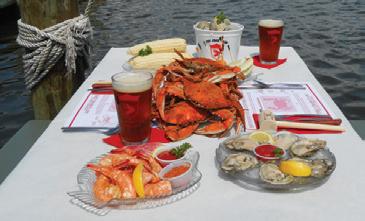


Oxford is one of the oldest towns in Maryland. Although already settled for perhaps 20 years, Oxford marks the year 1683 as its official founding, for in that year Oxford was first named by the Maryland General Assembly as a seaport and was laid out as a town. In 1694, Oxford and a new town called Anne Arundel (now Annapolis) were selected the only ports of entry for the entire Maryland province. Until the American Revolution, Oxford enjoyed prominence as an international shipping center surrounded by wealthy tobacco plantations. Today, Oxford is a charming tree-lined and waterbound village with a population of just over 700 and is still important in boat building and yachting. It has a protected harbor for watermen who harvest oysters, crabs, clams and fish, and for sailors from all over the Bay. For a walking tour and more history visit https://tidewatertimes. com/travel-tourism/oxford-maryland/.
Down to the Sea

Commission made long-range plans to update a declining merchant fleet with five hundred commercial vessels—available to serve as US Navy auxiliary. To make a big splash, the initial launch was the liner SS America . First lady Elea-
nor Roosevelt christened SS America at Newport News, Virginia on August 31, 1939. The next day, Nazi Germany launched Europeans into World War II by invading Poland. As the liner was being outfitted for passengers, Caribbean cruises replaced planned European crossings.
Large flags of the then-neutral United States were painted on either side of SS America ’s hull, along with her clearly-visible name. By the time the United States was attacked and joined the war two years later, the US Navy had requisitioned the liner. Among America’s crew of 643, Coast Guard code-breakers exposed the ship’s butcher and an accomplice



Hours: Fri.-Sun. 10am - 3pm Mon. 10am-2pm


as German spies, gathering maritime intelligence. Back at Newport News, SS America , designed for 1,202 passengers, morphed into USS West Point, converted to carry 8,175 servicemen in less luxurious accommodations.
In 1940 German U-boats sank supplies to Britain faster than the ships could be replaced. Britain ordered sixty ocean-class freighters from America. Shipyards were already working at capacity and steel
was in short supply. When the US entered the war in December 1941, U-boats began targeting our slow, unarmed merchantmen to devastating effect. By spring’s end 1942, a dozen tankers and cargo ships had been sunk within sight of Delmarva’s coast. As losses mounted, the US Navy created an Armed Guard Section to man civilian ships. War was nearly over before enough anti-submarine and antiaircraft guns became available.
Kipoteke’s breakwater is composed of nine concrete ships, part of twenty-four such vessels US Maritime Commission ordered in 1942. Specifications called for hulls of ferroconcrete, reinforced with steel rods, rather than tra -





ditional steel plates. McCloskey & Company contracted to build them at their Tampa, Florida shipyard. There they launched identical ships at a rate of one a month, beginning in November 1943 with SS David O. Saylor, named for the 19th cen-
tury developer of Portland cement, an important element in concrete. Saylor was unable to sail on schedule, found to have had a defective concrete pour. Despite this setback, SS Vitruvius launched the following month, December 1943.
Able Bodied Seaman Richard Powers boarded Vitruvius in Baltimore March 2, 1944 for her maiden crossing. They joined Saylor in a convoy he described as a “floating junkyard,” averaging three knots on a 33-day crossing to Liverpool. In June the twin ships rendezvoused with a convoy off Portsmouth, where, “One day Army Engineers came aboard with several cases of dynamite and set up charges in each hold. . . . About
Tidewater Residential Designs since 1989


two days out, the Captain called all hands on deck to read a letter from General Dwight D. Eisenhower telling us we would be making history—participating in the invasion of Normandy. . . . Crossing the channel on D-Day . . . the coast of France was a sight to behold. Ships everywhere. Battleships with guns
blasting the shoreline. Destroyers, destroyer escorts and every kind of landing craft imaginable. . . .We had a bird’s-eye view of landing craft heading for shore, the fighting on the beach and bodies floating in the water. I was sure glad to be on a ship—even if it was concrete.”

Saylor and Vitruvius were to be scuttled as blockships, code-named Gooseberry 1, part of a breakwater off Utah Beach, facilitating landing men and material. Other blockers had to be loaded with concrete and towed across the channel, but McCloskey ships were pre-poured and self-propelled. As the seaman related, “On D-Day+1 we tried to

maneuver to our assigned position, but German 88s started exploding around us. We got out of there just in time. We tried again on D-Day+3 with the same results. On D-Day+4 we went in without any problem. We got off the ship into an LC1 and watched army engineers set off the dynamite. A big puff of smoke and she sank quickly in the shallow water with about half the ship still showing.”
Author John McPhee, in Looking for a Ship, tells of Captain Paul Washburn, who had crewed on Libertys as a teen-aged ordinary seaman. When Down to
Today’s Maritime Commission website sums up the concrete program which built McCloskey ships (C1-S-D1s), as well as barges: “Although the vessels were an engineering success, they were neither cost- nor time-effective. Each concrete barge was two-thirds the cost of a Liberty Ship, used almost half as much steel, and were not capable of self-propulsion. Furthermore, the self-propelled C1-S-D1 vessels were only able to travel at seven knots. By the time the concrete construction program began, Liberty Ships had already eclipsed
President Roosevelt described Liberty ships as “ugly ducklings.” They were simplified, steel-plated cargo vessels designed largely like the sixty Britain had ordered in 1940. Loaded, Libertys were capable of eleven knots. The Maritime Commission contracted for hundreds of Libertys, 384 from Bethlehem Shipbuilding’s two Maryland facilities, Sparrows Point and Fairfield. By war’s end, all together, the Maritime Commission built 6,000 ships, including 2,600 Libertys.


Washburn boarded John Harvey in 1943, she was bound for Casablanca loaded with ammunition, C rations, tanks, and guns. Washburn remembered, “In New York, the Germans were waiting for you at the sea buoy. In San Juan, they hit you at the dock. In New York, the front was at the sea buoy.”
Having served on both oceans, Washburn said, “Jap submarines were inefficient. Our freighters crossed the Pacific alone. After a certain point, they zigzagged. They formed convoys only near the front.” This would explain why all nine ships at Kiptopeake served in the Pacific as US Army training and store ships. No convoy would want to include them and slow to seven knots.
Though providing crucial services, merchant ships of whatever material stood at the bottom of the pecking order. Experienced metal workers and mechanics gravitated to Navy Yards, which enjoyed priority status for scarce steel and mechanical elements. Of necessity, the Commission adopted simplified designs, found unique solutions to material shortages, and developed Rosie the Riveter.
To man new ships, Maritime Service Academies lowered admittance age to sixteen, as military recruiters sent trainees from the hinterlands. Many first encountered saltwater while practicing a training drill
called Abandon Ship. Because the military kept no records of civilian seamen, no definitive count exists of those killed or captured on duty in WWII. By percentage, only US Marines rivaled Merchant Marines’ numbers for most hazardous duty. By one estimate, 243,000 merchant seamen served, of whom 9,521 were lost; prisoners of war numbered 712, of whom 97 died.
Near the war’s end, Paul Washburn was on John G. Tod, a Liberty ship standing off Okinawa for sixtynine days, amid nightly air raids, two typhoons, capsized ships, and two ships run on reefs. He was there when Japan surrendered. Like other Merchant Marines completing a voyage, he was paid off by employers operating Liberty ships under government contract. Then he was on his own, ineligible for GI Bill ben-

efits or membership in veterans’ organizations.
President Franklin Roosevelt didn’t live to fulfi ll a promise of veterans’ status for merchant seaman serving in the war. In 1977 Congress approved a bill authorizing the Air Force to administer a Civilian Military Service Review Board, to determine any omitted groups deserving benefits. After approving fourteen other groups, and being sued in 1987, the Board granted veterans’ status to WWII Merchant Marines.
Among the 1987 suit’s victorious plaintiffs was Stanley Willner, torpedoed in 1942 and held captive in Burma. By war’s end he’d worked years on the Bridge on the River Kwai. Though reduced from 135 to
75 pounds, Willner survived to return home. He said, “There was so much criticism of the Merchant Marine at the close of the war. Everyone thought that we were getting paid so much during our service. Well, my family received $1 a day after I disappeared, and when the government found out I was still alive they asked my family for repayment.”

Forty-some years ago, A.M. Foley swapped the Washington, D.C. business scene for a writing life on Elliott Island, Maryland. Tidewater Times kindly publishes Foley’s musings on regional history and life in general.











Due to its anti-inflammatory effects, broccoli may help fight allergies, boost immunity, enhance cardiovascular health and even help prevent some types of malignancies. Its high percentage of vitamin A and antioxidants promotes eye health and may prevent age-related macular degeneration and cataracts. It is also healthy because of
its high content of vitamin C, which is arguably the most essential nutrient for immune function. Broccoli is loaded with it.
With any variety of broccoli, you want to look for a deep green color, bordering on blue-green, sometimes purple. Stay away from anything yellowed. The florets should be tight little clusters, not opened-

out buds, which indicate age. Also, check the ends of the stalks and avoid those that are significantly dried out.
Store broccoli in a plastic bag in the refrigerator. It isn’t particularly perishable, but do use it within a

couple days of purchase for the sweetest flavor. For starters, buy whole heads of broccoli (not just broccoli crowns) because the juiciest, sweetest part of the broccoli is the stem. Start by trimming away any leaves and then shave off the outer layer of the stem, removing any hard bits of fibrous layers. Slice the stem into thin or thick coins, depending on your recipe. Break the head apart gently and cut away individual florets, following the natural branching of the vegetable to yield long-stemmed florets.
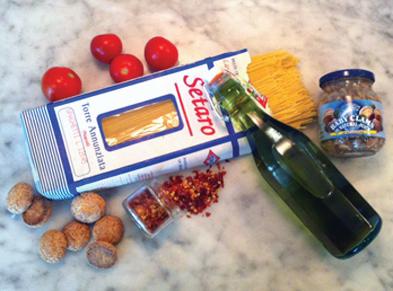
I grew up eating broccoli mostly steamed or boiled. This is still how I prepare it when I am using it in a pasta dish. But my go-to method for broccoli is high heat; either roasting, broiling or grilling. For roasting, I toss the broccoli in some olive oil and seasoning first. But for broiling or grilling, I just throw it on the baking sheet or grill basket—no oil until it’s cooked—because the oil creates an unpleasant chemical flavor. Grilled broccoli, seasoned with a bit of extra-virgin olive oil and lemon juice, is addictive.
Broccoli takes to charring especially well because the tips of the florets char at a different rate than the dense stem, which creates lay-

ers of crispy and juicy textures.
1-1/2 pounds broccoli, stems trimmed and peeled, cut into long florets
1 lemon, halved, and one of the halves cut into 4 wedges
Dried chili flakes
Kosher salt and freshly ground black pepper
1/4 cup extra-virgin olive oil
Aged Pecorino Romano, for grating 2 tablespoons dried breadcrumbs (optional)
Heat the broiler. Spread all the broccoli on a rimmed baking sheet and broil—with no oil—until it is slightly softened and nicely charred on most surfaces, turning once, 5–7 minutes. You can also do this on a grill, but you will need a grill basket.
Pile the broccoli into a bowl and squeeze the half lemon all over it.
Season with the ½ teaspoon chili flakes and generous amounts of salt and pepper. Add ¼ cup olive oil and toss. Taste and adjust the seasoning.
Arrange the broccoli on a serv-



ing platter, grate a nice amount of Pecorino over the top and sprinkle on the breadcrumbs, if desired. Serve with the lemon wedges.
1/2 cup beef broth
6 tbsp. soy sauce
3 tbsp. light brown sugar
2 tbsp. sesame oil
1-1/2 tbsp. cornstarch
2 garlic cloves, grated
1 (1-inch) piece fresh ginger, peeled and finely grated
2 tbsp. Expeller pressed canola oil, divided
6 cups small fresh broccoli florets
1 lb. boneless sirloin steak, thinly sliced (about ¼ inch thick)
2 cups hot cooked white rice
Garnishes: Sesame seeds, crushed red pepper and sliced scallions


Whisk together beef broth, soy sauce, brown sugar, sesame oil, cornstarch, garlic and ginger in a small bowl until sugar dissolves. Set aside. Heat 1 tablespoon of the canola oil in a large skillet over medium; add broccoli florets.
Partially cover; cook, stirring occasionally, until broccoli is tendercrisp, about 5 minutes. Remove from skillet; set aside.
Increase heat to high; add remaining tablespoon canola oil to skillet. The secret to slicing steak for the thinnest, most even results: freeze the raw meat for 15 minutes before cutting it. Place steak slices in an even layer in skillet, and cook, stirring occasionally, until mostly browned, about 3 minutes. Stir in
broth mixture and reduce heat to medium-high. Cook, stirring constantly, until thickened, about 1 minute. Remove skillet from heat; add reserved broccoli, stirring until coated. Serve over rice; garnish with sesame seeds, crushed red pepper and scallions.
Broccoli-Parmesan Soup with Grilled Cheese Croutons
Serves 4
3 tbsp. extra-virgin olive oil
2 tsp. chopped garlic
1/4 cup all-purpose flour
2 cups vegetable or chicken broth
2 cups organic whole milk
1 tsp. kosher salt
1 tsp. black pepper, plus more for garnish


4 cups chopped fresh broccoli florets
2 tbsp. butter
2 slices hearty whole grain bread


1/2 cup shredded sharp white Cheddar cheese
2/3 cup Parmesan cheese, finely grated
Garnish with chopped chives
Heat oil in a large saucepan over medium. Add garlic, and cook, stirring frequently, until fragrant, about 1 minute. Stir in flour; cook, stirring constantly, until bubbly, about 3 minutes.
Gradually whisk in broth and milk until smooth. Stir in salt and pepper, and bring to a simmer over medium, stirring occasionally. Reduce heat to medium-low. Add broccoli, and cook, stirring occasionally, until tender, about 10 minutes.
Mon.-Sat.: 6 a.m. to 2 p.m.





Meanwhile, melt 1 tablespoon of the butter in a medium skillet over medium. Place 1 bread slice in skillet, and top evenly with cheddar; cover with remaining bread slice. Cook, undisturbed, until golden brown, 1 to 2 minutes. Flip, and add remaining 1 tablespoon butter to skillet. Cook, undisturbed, until golden brown,1 to 2 minutes. Cut into 12 equal pieces.
Carefully pour broccoli mixture and secure lid on blender; remove center piece to allow steam to escape. You can also wait until it cools and then blend. Place a clean towel over opening. Process until smooth, about 1 minute.
Divide soup among 4 bowls, and top evenly with Grilled Cheese Croutons; garnish with chives and additional pepper. Grate freshly grated Parmesan cheese. The already grated Parmesan cheese has additives to keep it from sticking together, so it doesn’t melt as smoothly.
Ice
1-3/4 tablespoon sea salt, divided
6 cups small fresh broccoli florets
1 (16-oz.) package orecchiette pasta
2 cups lightly packed fresh basil leaves, plus more for garnish
1 cup Parmesan cheese, shredded, plus some for garnish

1/2 cup extra-virgin olive oil
1 tbsp. fresh lemon juice
2 garlic cloves, coarsely chopped 1/2 cup toasted walnuts, chopped and divided Black pepper
Fill a large bowl with water and ice; set aside. Bring 12 cups water to a boil in a large saucepan over medium-high; stir in 1 tablespoon of the salt.
Add broccoli, and cook, stirring occasionally, until tender, about 3 minutes. Using a slotted spoon, transfer broccoli to ice water; cool for 30 seconds. This stops the cooking process and preserves the broccoli’s bright green color. Drain well. Set aside.
Return water in saucepan to a boil over medium-high. Add pasta; cook, stirring occasionally until al dente, about 10 minutes. Drain pasta, reserving ½ cup cooking water. Return pasta to saucepan; set aside. Coarsely chop 3 cups broccoli. Place chopped broccoli, basil, Parmesan, oil, lemon juice, garlic, ¼ cup of the walnuts and remaining

¾ teaspoon of salt in bowl of a food processor, and pulse until a coarse pesto is made, about 30 pulses,


stopping to scrape down sides of bowl as needed. Add pesto, remaining 3 cups broccoli and reserved cup cooking water to pasta in saucepan, and cook over medium-low, stirring often, until heated through, about 2 minutes. Top evenly with remaining ¼ cup walnuts, and garnish with additional basil, shaved Parmesan, and pepper.
4 oz. mild Italian turkey sausage, casing removed
1 lb. fresh prepared pizza dough, at room temperature
All-purpose flour, for dusting 1/2 cup pizza sauce


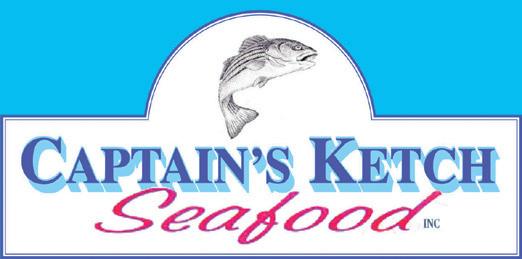

1 cup fresh mozzarella cheese, torn 1-1/2 cups small fresh broccoli florets
1 pint halved grape tomatoes
1/2 cup Parmesan cheese, finely shredded
1/2 tsp. black pepper
Torn fresh basil
Preheat oven to 500° F with racks in top third and lower third positions. Lightly coat a large baking sheet with cooking spray. Cook turkey sausage in a small skillet over medium-high, stirring occasionally to break into smaller pieces, until no longer pink, about 5 minutes. Transfer from skillet to a paper towel-lined plate, and drain. Roll and stretch dough on a lightly floured surface into a 12-inch round. Transfer to prepared baking sheet. Spread pizza sauce evenly over dough, leaving a 1-inch border around edges of dough. Place sausage, fresh mozzarella, broccoli, and tomatoes evenly over dough. Sprinkle evenly with

Parmesan and pepper.
Bake in preheated oven on lower rack for 5 minutes. Carefully transfer baking sheet to top rack and bake until crust is golden brown and cheese is melted, about 5 minutes. Let cool 5 minutes. When you bake the pizza on two levels of the oven, the lower rack makes the bottom of the crust crusty, and the upper rack cooks the top. Garnish with basil and serve.
Serves 6
1-1/2 cups panko breadcrumbs, divided
1/4 cup plus 2 tbsp. unsalted butter, divided
1 small red onion, chopped
4 large garlic cloves, minced
4 cups bite-size broccoli florets
3 cups shredded rotisserie chicken
3 cups cooked white rice
1-1/2 cups sour cream
1 cup mayonnaise
1 large fresh lemon, juiced
1-1/2 tsp. kosher salt
1/2 tsp. black pepper
2 cups sharp white Cheddar cheese, shredded & divided
2 tbsp. chopped fresh parsley, divided
Preheat oven to 400°F. Lightly spray a large rimmed baking sheet with cooking spray; sprinkle evenly with ¼ cup of the breadcrumbs.
Melt ¼ cup of the unsalted butter in a small skillet over medium-high.
Add chopped onion, and cook, stirring occasionally, until tender, about 3 minutes. Add garlic; cook, stirring often, until fragrant, about 1 minute. Remove skillet from heat.
Stir together onion mixture, broccoli, shredded chicken, rice, sour cream, mayonnaise, lemon juice, kosher salt, black pepper, ¾ cup of the bread-crumbs, 1 ½ cups of the Cheddar cheese, and 1 tablespoon of the parsley in a large bowl until combined. Spread broccoli mixture in an even layer over breadcrumbs on prepared baking sheet.
Microwave remaining 2 tablespoons butter in a medium-size microwavable bowl on high for 30 seconds. Add remaining ½ cup breadcrumbs, ½ cup cheese and 1 tablespoon parsley to butter, stirring to combine. Sprinkle breadcrumb mixture evenly over top of casserole. Bake in preheated oven until golden brown, about 30 minutes. Let stand 5 minutes; serve.
As a healthy option you can add whole grains by using wholewheat panko. Or replace the white rice with an equal amount of cooked brown rice, quinoa or farro.

Pamela Meredith, formerly Denver’s NBC Channel 9 Children’s Chef, has taught both adult and children’s cooking classes.
For more of Pam’s recipes, visit the Story Archive tab at tidewatertimes.com.

B. P. Gallagher
The waning weeks of January were full of frost and ice, friction and fire, push and pull. Earl convinced Leon to cut back on his drinking, at least until Deputy Calhoun returned for his dreaded interview. The situation spooked Leon enough by comply with, maybe even desire, the insisted-upon change. He wouldn’t say what he and Bunky had spoken about in his
office that day, only swore he’d revealed nothing to the dockmaster that could implicate them. Earl had no choice but to believe him.
One unplanned but not unpredictable result of Leon’s newfound temperance was a sea change in his scattershot attempts to court Clara. Leon and Dougal were fast friends now, their evening walks cemented as a routine, and Clara joined them with increasing regularity. Earl suspected it wasn’t only for the puppy’s company. All signs were hope -

ful that Leon was coming out of his low tide at last. Yet the Sheriff’s deputy’s impending visit loomed large, a rocky coast against which a single slip of Leon’s tongue could dash all their fates. And though Leon was trying his best, he wasn’t taking to sobriety with total grace.
“Can’t that bastard come talk to me already?” he griped one evening over dinner. “I’m bored as hell being sober. Been thinkin’ too much.”
“That’s not such a bad change for you,” said Maggie.
Leon swatted aside the verbal jab. “It is when it’s thoughts like these. I just can’t stand not knowing when he’s gonna show up! Can’t

hardly sleep for it.”
“Just keep it up a little longer and it’ll be well worth it, trust me,” said Earl. “Besides, we ain’t gotten to work on time this many days running in who knows how long. Maybe ever!”
“Clara’s found you quite fetching lately too,” said Maggie. “I got it on good authority—”
“I don’t care! Well,” Leon backtracked, “about Clara, sure I do. I’m all ears where she’s concerned.
Figure I can use the help. But I’m sick of waiting on that goddamn knobby-kneed sheriff. It’s gettin’ to the point where I wanna drive over to ‘Bury and talk to him myself, get the damn thing over with already!”
“I hope you’re joking.”

“Why shouldn’t I, Earl? Don’t trust what I’d say?”
“It ain’t that, so you don’t need to start hollerin’. It’s just that we don’t wanna seem overeager, overplay our hand. We got no way of knowing what Tyler Calhoun’s thinking, nor how much he thinks we know. I wasn’t exactly supposed to overhear his conversation with Bunky. It might notta occurred to him Bunk would tell you he was looking for you. Didya think of all that?” The look on Leon’s face said he hadn’t considered it, or given it short shrift if he had. Earl said, “Right. So if you come at him blathering about tugboats and such when he doesn’t expect, it might come off as pretty suspicious. See what I mean?”
“Course I do. I ain’t stupid.”
“Good. Then you’ll agree it’s wisest to sit back and wait, even if the waiting is painful.”
In the days that followed Leon took more evening walks with Dougal and Clara Gibbs and held his drinking to a minimum, as far as Earl knew. But Deputy Calhoun didn’t reappear on Moore Island or at the marina that week or the next. Earl could see his brother getting antsier by the day. Leon took to pacing his bedroom, keeping watch for the deputy out the second-story windows. The constant footsteps and squeaking floorboards soon grated on Earl.
“Should I build you a widow’s watch next time I’m patching a leak in the roof?” he said when Leon

stumped downstairs to dinner one night.
Leon glowered, but said nothing. The deep, dark bags under his eyes suggested Earl should be grateful he hadn’t taken to the infernal pacing at night. Not yet, anyways.
One evening, Maggie returned from a visit next door with an arm around a crying Clara Gibbs’s shoulder. “Earl,” she said, ushering Clara down the hall. “Mister Gibbs wants you to stop over next door for a few minutes, if you can.” Her eyes said it wasn’t a request.
“Pop Pop’s been talking about his fi nal arrangements. Keeps trying to bring up the topic with me every odd moment. But I just can’t! You understand?”
Earl could see why not. She was on the verge of bawling right now. He didn’t blame her, either. After what Clara had been through, the prospect of losing her Pop Pop must be terrifying. But him? Why would the Geezer want to see Earl, of all people? It made him uneasy. Then again, anything out of the ordinary had that effect on him lately.
Still, he couldn’t help but ask. “Me? Am I really the person for… that? ”
Leon appeared from the den. “Everything alright, Clara?”
“Leon, will you bring Doogie in from his doghouse? He’ll want to see Clara,” said Maggie. Then, in a
lower voice, “Mister Gibbs asked for you by name, Earl. You better head on over there.”
“Hi Leon,” said Clara. She sniffled. “I’m okay, I guess. Think we could go see the puppy, like Maggie said?”
Leon met her in the hall with an embrace “You certain? I’m sure I could help out with the Gee—uhm, Mister Gibbs too.”
“Dammit Leon, go get Doogie!” snapped Margaret. “And Earl—”
“I’m going!” said her brothers in chorus.
Earl tossed on his jacket and followed his brother out the back door. Leon spat and cursed under his breath as they went. His mutters broke off with a reluctant laugh as Dougal burst from his doghouse and tore across the yard. The display made Earl wish he only had to deal with the puppy; made him reflect, not for the fi rst time, that being the responsible sibling could be a real drag.
Leon wouldn’t see it that way. He’d resent being relegated to doggy duty while his younger brother played the part of grownup—even more so with Clara involved. Leon was sensitive where it came to her. But Earl would have to worry about that later. Because at the end of the day, he was the responsible one. Geezer Gibbs was dying. Earl could smell it on the air of the old man’s sickroom, the scent evoking some primal sense all creatures


have for mortal illness in their own kind. Or maybe that was just because Earl had encountered it once before, when Pop was expiring. Different from the poisonous reek that had accompanied the slow rot of Mom’s mind. A more immediate stench of decay.
Mister Gibbs’s wasn’t a catching ailment, but instinct told Earl to recoil from it all the same. No wonder Clara couldn’t bring herself to discuss his final rites in this stuffy mausoleum of a bedchamber. Caring for her ailing grandfather in such an oppressive atmosphere would be hard enough to bear, if Earl’s experiences with his father were anything to go by. When Death awaited your loved one on the front stoop, broaching the subject felt like opening the door and inviting him inside.
Earl crossed the threshold into the room. “Mister Gibbs? It’s Earl. I let myself in, hope you don’t mind. Clara said you’d asked for me and I didn’t wanna keep you waiting.”
If ever there was a man with scant time to spare, it was this desiccated husk on the bed before him. Geezer Gibbs sat propped up on a pair of pillows, chest rising and falling fitfully with his wheezing breaths. Clara had thrown back the curtains, but a certain pall lay upon the room despite the sunlight filtering through the windows. Such long
shadows we cast in dying, thought Earl with a shiver he hoped the man on the bed didn’t notice. Scant chance, judging by the rheumy mist in his eyes, the slow start he gave as Earl approached the bed.
“Ah, yes. Earl…” said the Geezer effortfully, wheezing in the pauses. “Thank you for co— ahem¬—coming. I’m—” He broke off, coughing.
“Of course, sir. How can I help? Fetch you some water, maybe?”
“Got water. Right there.” He gestured to a pitcher and glass on the nightstand with an arm deflated by illness and age, the skin loose and papery thin. Earl realized with a pang of sadness that the man couldn’t summon the strength to pick up the glass himself. Only when he’d held the glass up to Mr. Gibbs’s lips for a long drink was the old waterman able to speak again.
“I ain’t got long left on this earth,” he said, the ghost of a cavalier smile playing over his waxen features. “So I gotta make sure— hrrmph gotta make sure my affairs are in order. Clara’s been through enough, lord knows. Can’t bear to put her through more, y’know?”
“Of course, Mister Gibbs. But, uhm…ain’t a lawyer more suited to this type of thing?”
Geezer Gibbs stifled a hacking cough with the corner of his bedspread. “Ain’t them sorts of affairs I wanna talk about, don’t worry. I got a country lawyer from the Shore helping me with that, and a patch


of ground awaiting me next to my dearly beloved wife not a half mile down the road.”
“Oh, alright. What do you need from me, then?”
“Personally? Nothin’. I’m past the point of needing much except that grave I mentioned, and soon. But Clara’s gonna need a lotta help when I’m gone, and that’s what I wanted to talk with you about. Pull up that chair in the corner there.”
Earl did as told, feeling like an interloper despite being summoned to the Geezer’s bedside. Shouldn’t the old man’s kin be handling this? He ain’t got many left.
Mr. Gibbs seemed to sense his misgivings. “Listen, Earl. I won’t claim we been like family to one another, though I have watched you and Leon and Margaret grow up, and I was close as kin to your Pop Pop. He woulda been proud of you and Maggie. Leon too, don’t get me wrong, though he mighta worried over how similar the two of ‘em are in certain ways. All fathers
and grandfathers worry so about their progeny, worry we’ll end of giving ‘em all our worst qualities. Lord knows I lie awake wondering whether I instilled the worst of me in mine. Thinking maybe if I hadn’t, maybe I’d have somebody other’n the neighbor boy to ask such a weighty promise of.”
Earl felt another itch of intrusion, this time at the private quality of the dying man’s reflections. On another note, he wondered whether he ought to be writing this down. The conversation thus far had felt like a preamble to last words. Lord, I hope not. Not today.
Geezer Gibbs was saying, “I need you to be like family to Clara when I’m gone, since she won’t have nobody left on the island after me. I know I don’t need to say the same to Maggie. That sister of yours has done more for us than I can repay—” His speech devolved into another coughing fit, giving Earl’s stomach ample time to perform a series of anxious somersaults. “—since I got sick. Bringing meals by and such, y’know, and the sight of that puppy

of hers just warms my heart. I wanna ensure Clara can count on the same from you, that’s all.”
“Oh.” Earl’s stomach landed its somersault. Shakily. “Of course she can, Mister Gibbs. We’ll take good care of Clara, promise. Me and Maggie, and Leon too. He really cares for your granddaughter, sir. We all do.” At Earl’s insistence regarding Leon, the Geezer emitted something between a snort of disapproval and a grunt of dyspepsia. If only you knew, old-timer, what we’ve all three done on your Clara’s account. Suddenly Earl felt not only like an intruder, but a usurper. Leon was the one doing his damnedest to straighten himself out and court Clara. Shouldn’t he be the one making this deathbed vow? No, dummy, came the reply, the Geezer doesn’t take him seriously. The truth of which only made Earl feel worse.
“Well, good. Thank you,” said the ancient waterman. “Means a lot to me—more’n you know. Now that’s that, and since ya’ll are gonna be like family to my Clara, I mean to leave the Marylou to you—and your brother, mind, so long as he don’t take her out drunk. My automobile— ahem—will go to— hrrm— Clara, to sell or learn to drive herself. Ahem. Although the thought of women driving—” He grunted, gestured for the water glass. When he’d caught his breath again after taking a drink, he said, “But that’s for the
arbiter…and the will. Just warms my heart to know…to know there’s somebody lookin’ out for my Clara. Poor girl. She’s had it so…so hard.”
Mr. Gibbs’s strength was fading fast, wheezing subsiding to a steady lull. His eyelids fluttered shut, and he mumbled something incoherent. Falling asleep—or dying. Please don’t let it be dying. Not while I’m the only one here. Stepping softly not to disturb its occupant, Earl crept away from the bed.
“Earl,” murmured Geezer Gibbs as Earl turned from the room.
“Yes, sir?”
“I know.” The whisper soft as a leaf of paper rustling in the breeze, the words weighty as an anvil. But when Earl turned back, heart in his




throat, the Geezer’s bony back was to the door, his head laid on the pillow. Asleep. Or dead.
Coward though it made him, Earl fled. By evening’s end he’d halfway deluded himself into thinking he had imagined the words. But in his dreams that night rotten corpses rose from the bog and shambled after him down corridors of scorching flame, whispering in voices that sizzled and hissed like the inferno: I know. I know. I know.
What did the old waterman know? The question ate at him, however brutally he tried to convince himself that it wouldn’t matter soon. Frail and weak as Geezer Gibbs seemed, Clara was sure to come knocking at their door any day now, distraught over her Pop Pop’s passing. Yet Mr. Gibbs persisted as the final days of January came and went.
Leon didn’t ask Earl for details about his unsettling chat with the ailing waterman, wouldn’t say much of anything to his brother once Earl returned from next door. When Leon spoke at all, he was peevish and uncharitable. That too persisted through the end of January.
When Maggie was late getting home from the cannery one night, Leon’s wrath boiled over. It was everything Earl could do to stop him driving up and down the Shore looking for her.
“That airhead,” said Leon, pacing the kitchen floor. Dougal trotted along happily in his wake, nipping and tugging at his pantlegs. “She promised to get a ride home straightaway after her shift! Ouch, Doogie! Leggo my ankles, you little lunatic!”
“Think she got picked up by the Sheriff?”
The horrified look on Leon’s face said he hadn’t thought of it until then. “Shit. You think?”
Earl hadn’t before; not seriously, anyways. But his brother’s reaction lent the thought credibility, which gave his paranoia free rein to run with it. “Could be. Could be he offered her a ride home, even, knowing she’d be too afraid to say turn him down. Wouldn’t that be a helluva way to finagle his interview with you!”
“Sneaky sumbitch!” Leon pounded a fist into his palm. “I’ll kill him!”
“Well, hold on,” said Earl, retracting his vivid imagination before it got them both in trouble. “That’s just a wild guess, and now that I think about it he don’t need to do that when he can already come out here any time he wants. We oughta hold tight awhile longer.”
“You wait here in case she comes back, then, but lemme take Betsy out looking for her already! Clara’d probably take a drive with me, ‘specially if we brought the pup along.”
“Think it through a minute, Leon. D’you really think Clara could stand
the sound of all that honking you’d be doing? Besides, the tide’s nearly in. You’d be paddling back.”
“So will Maggie, if she ain’t home soon! And you don’t need to remind me that like I’m some kinda idiot. I ain’t—”
“You ain’t stupid, I know. I’m just saying—”
Leon interrupted him. “Who the hell is that?”
“What?”
“Comin’ down the lane there. Looks like somebody on a—is that a bicycle?”
Earl joined his brother at the kitchen window. Two somebodies, both riding the same bike; hence Leon’s confusion. “I think so. And if it ain’t Maggie on the handlebars!”

“What in the hell…” With due suspicion, the brothers went to meet their sister and this newcomer with the unconventional mode of transportation.
In the driveway Maggie performed a smooth dismount from the handlebars. She straightened her skirts as her brothers approached. “Leon, Earl, this is Jonah. Jonah Everett. My ride home today.”
“Hi, Mister Leon. Mister Earl.” The young man at the pedals of the bike was…the first word that came to Earl’s mind was small, but that didn’t quite capture it. Jonah Everett wasn’t tall by any means, but managed by virtue of his slight frame to appear overlong. Gawkish. Despite that, Earl had a feeling






he was neither weak nor uncoordinated. He looked fast, like he might be trouble in a scrap. Why are you thinking of fighting the kid before even saying a word to him?
“Mister?” said Earl. “Jonah Everett, you can’t be but two or three years younger’n me.’
Jonah flushed. “Still, y’know. Ya’ll are the men of the house and all.”
“That’s right,” said Leon. “Now you better ride back over to the Shore lickety-split. You can’t have more’n fifteen minutes before the tide starts back in, and I don’t know if a bicycle will make it through the shallows if you’re late.”
“Be nice, Leon. I invited him to stay for dinner.”
“I sure would like to dine with you if Maggie’s invitation is, uh, allowed to stand.” Jonah put down the kickstand of his bike and removed a pair of wire-rimmed spectacles from his pocket. Wearing them made him look bookish as well as gawkish.
“How’s he gonna get himself and his bicycle home, then?” said Leon.
“We’ll take him and his bike over in the rowboat later!”
“I really don’t mind biking back in the dark,” said Jonah. “I’ve got an electric torch in my knapsack.”
“Who’s gonna row him over?” said Leon. “Not me.”
“He can man the oars on the way over! And I can row myself back.



I’m plenty strong enough to.”
Leon shook his head. “By yourself? I don’t think so, Maggie. It’s gettin’ windy, and I don’t want you out on the Sound at night alone. I ain’t budging on that neither, so don’t push me! I had a long enough day at the marina as was.”
“I’ll go with them, then,” said Earl, eager to forestall argument. He was starting to feel embarrassed for the poor kid, and couldn’t see what the big issue was besides. “You can stay for dinner if you want, Jonah.”
“No, he can’t,” said Leon. “Thanks for bringing her home, Jonah, but no. Time to be on your way.”
“Leon! Why are you—”
“Don’t worry Maggie. I’ll just be going.” Jonah got back onto his bicycle. “Like your brother said, I don’t want to swamp my bike if the tide’s coming in.”
“Well…thanks for the ride, Jonah,” said Margaret, face flushed with anger and embarrassment. “I’m sorry my brother’s such an insufferable ass.”
“Oh no, he’s… Um. See you later, Maggie!” said Jonah, already pedaling up the driveway. “Goodbye Mister, uh, Mister’s Higgins, sirs!” With that, he was off in a dead heat.
“Bye now! Hope the spokes on your bike don’t get too rusty,” said Leon. The moment Jonah Everett’s creaky bike was out of earshot, he

turned to Maggie. “Mouth off to me like that again, I dare you!”
“You asshole!” Maggie doubled down. “Do you always have to be so awful?”
“That was pretty harsh, Leon,” said Earl. “Jonah’s nice enough once you get past the twitchiness. He don’t seem your type though Maggie, gotta say.”
“What’s my type, since you know so much?”
“Dumb enough to walk all over. Plus drives something with an engine, usually.”
“Are you crazy, Maggie?” said Leon. “You too, Earl! Don’t you know who that pipsqueak is?”
Earl shrugged. “Some poor kid you just scared shitless, I guess.”
“Not just any kid, oh no! An Everett! Care to explain what’s so goddamn foolish about that, Maggs?” Maggie had fallen quiet, so Leon fi nished his own thought. “What d’you think Tyler Calhoun’s gonna say when he hears about kin of his running around with you?”
“You’re the one told me to fi nd a ride home today!”
“So you went out and found a Calhoun to bring home?” said Leon.
“He’s not a Calhoun! Not really.”
At last the connection snapped into place for Earl. Everett—offshoots by marriage of the Calhoun clan. That explained why Leon was being so cagey. Risky business, bringing somebody like that around. Nice kid or no. “Leon’s

right, Maggs. We oughta keep our distance from those folks. We don’t know how much suspicion’s coming our way. What if he’s reporting back to them?”
“That’s the whole point!” Maggie said. “Jonah doesn’t want his folks to know he’s spending time with me. He won’t tell nobody.”
“Why don’t he want his folks to know?” said Leon. “Ashamed of you, is he?”
“No doofus, because I told him not to say anything to them! He thinks Tyler Calhoun’s an old stick in the mud anyways.”
Leon was adamant. “It’s still stupid. Big risk for no good reason, way I see it. Hell, I’d rather you go back to driving around with old Jimmy whatshisname than this!”
“Stupid, is it? If it’s so stupid, then I guess you won’t care to know when Tyler Calhoun is coming by next!”
Leon stared dumbfounded at Maggie. Earl suspected he was wearing a similarly dumbstruck expression. “Jonah Everett knows about that? How?”
“See? I thought you’d be interested to hear.” Margaret’s face broke out in a smug smirk. “I’ve got the inside scoop. Jonah says the Calhouns have held family meetings up to the volunteer firehouse just about every week since the preacher disappeared. Powwows where they sit
and plan how they’re gonna bring Preacher Pete home, or bring justice to his…disappearer. Or whatever. Jonah says they’re still making believe like he’s not dead, even though the menfolk in the family all seem to know it’s a done deal.” The self-satisfied smirk slipped.
“Why would Jonah let you in on something like that?”
“I don’t know, Leon, maybe ‘cos he likes me! And he doesn’t seem to care for that side of his family too much. It wasn’t hard. I pretended like I was fishing for local gossip, you know. Once I got him talking about how sick he was of getting dragged up to the firehouse to sit through family meetings week after week, he kinda told me the rest on his own.” She shrugged, nonchalant as if discussing something curious she’d seen on the side of the road today.
Earl absorbed this, astonished and more than a little alarmed by how calculating Maggie had once again proven herself. To hear her tell it, she’d taken up with the Everett boy to stay abreast of Calhoun family proceedings! Clever, no doubt—hell, he hadn’t even recognized the familial connection at first—but reckless. An insane risk to assume by herself on a whim. He shouldn’t be surprised, considering how coldly she’d dispatched Pastor Calhoun, but that made it no less worrying. Unchecked, his siblings’ impulsivity would be the
downfall of their whole household.
“You shoulda consulted us on this,” he said. “We gotta keep this thing wrapped up tight between us three, or it all falls apart.”
Maggie pouted. “You don’t need to remind me, Earl. I was only trying to help. Which I did, by the way. Now we know when to expect Deputy Calhoun, and Jonah none the wiser. He’ll just assume I’ve got a couple mean, ugly brothers who’re too protective of me. Which I do.”
“When’s he coming, then?” said Leon, too anxious to acknowledge the jibe.
But Earl wasn’t done reprimanding yet. “Just because the gamble worked out in a small way this time doesn’t make it worthwhile, Mag-
gie. Not if it costs us big later on.”
“It’s not all about that—I like Jonah, too. Honest! He’s strange, but he’s kinda cute. As for Tyler Calhoun, he’s coming by the island again to talk to folks tomorrow evening. So you’re both good n’ welcome for the heads up!”
Leon paled. “Let’s hurry up and get inside, then. We better start goin’ back over what I’m gonna say.”

Brendan Gallagher is a 2013 graduate of Easton High School and is currently finishing up a Ph.D. in Social-Personality Psychology at the University at Albany.










(written about 1941 about life in Deal Island, MD in the 1880s) transcribed, edited and with notes by James Dawson from an old manuscript he found
By nature the old colonial state of Maryland is grandly endowed. Topographically it ranges from great marshes, fruitful and fertile lowlands to rolling plains and mountain ranges; its forests offer various woods, especially oak and pine; its soil varies from sand and alluvial or sandy loam to cold clay. Magnolias give incense breath to June, and there are hunting, fishing, and sailing a-plenty, and fried chicken, corncake and oysters, too, for the hungry—maybe shad and beaten biscuit.
The Eastern Shore offers no mountain scenery. It has beauty of stream, forest and vegetation.
Stippling the upper bay shore and the margin of some rivers there are bluffs, and here and there the land surface has a roll. The Shore is not absolutely flat though in general it is level country whose corn-clad acres are not many feet above sea level at high tide. Generally speaking the Eastern Shore has about three levels: the higher land of the interior (not very high), the level to low lands tapering to the bay, and the lowlands

that end in marshes and meadows along the creeks.
Now, whatever a man’s position or possessions, in the lowlands, politics was a joy and an escape valve for monotony; for even oysters, terrapins or magnolias can become monotonous. Water needs to flow, else it stagnates.
Many of these descendants have prospered and held office of some kind and are the old families, or the aristocracy of the country; are the high growths of the parish lowland— the mallows, cat tails, and calamus, as the long memories of the remnant old gray heads can testify.
The shrewd and ambitious toured the districts and campaigned the
counties in self-denying sympathy for the poor, the unprotected and helpless, whether in business, society or produce, needing state or federal help—all the needy—to impress the populace that they were ready to yield their very selves to suffering for the welfare of the dear people, for a fat salary, position, and the perquisites of office. These speakers were trundled around from place to place, as the “big guns” of their parties ready to defend.
However it may be there was always a “punch” in politics, even among the numerous folk who were just plain folk. As said, though they had no hope of being more than an inspector or a deputy, politics was tabasco for oysters, and a whooping

Run Auto Service Shop with over 31 years experience. Offering a wide variety of services to include but not limited



escape from monotony—and they all could VOTE.
The “sentiment formers” as one official born, on a farm in one of the creek regions, said of the “big guns,” men who came to fire up the voters were always welcome to the people; for they all ate and drank “politics.”
For this reason the shrewd politicians visited the districts and campaigned the counties, for even one vote might secure them a big dinner at Barnum’s or at Guy’s Hotels in Baltimore; and besides might be the turning or determining vote in securing a title of a fat salary.
Public meetings were held, the camp meetings were patronized, and

they shook hands, and shook hands, and shook hands.
The people well knew it was all but mere ingratiation to secure votes, but the charm of office titles, and insig-



The world deserves a better e-bike and Electra has cracked the code, combining comfort, stability and performance in one stylish package. Ready? Where will you Go!















nia seems paralyzing if the Governor, or a Colonel, or such, condescends to shake their hands.
Well, the campaign down Somerset Co. way was on. The lowland vote could not well be neglected. The fall campaign afforded great excitement for all, and did the wily politicians secure a big plum by the vote, the people of the low countries, necks, and meadowlands thought that they too were entitled to a few crumbs from the political table; might drive some small gain, for many voters were venal and voted for the best or last contributor.
About the time to which this writing pertains (say the 1880s) the po -
litical campaigns were often booted into success; for there were intensive forests of white oak and of pine in which many axemen were employed and high leather boots were in great demand both by the wood choppers and by the men in general. Every fall the merchants stocked up with cases of boots, large cases made of white pine and containing each many pairs. In election years, the various local merchants laid in larger stocks, for not only were high leather boots at a premium in white oak swamps, but a pair of good boots might secure a vote, which of course would help the party, and would greatly encourage those loyal, self-denying candidates who were so very real and willing to make sacrifice and endure hardships









for freedom and salaried seat at Barnum’s or Guy’s epicurean tables.
Somerset County in common with other colonial coastal regions, had its necks and lowlands, fertile and easily arable; its boatmen and marshes.
The region was prolific in oysters and votes.
Yes, many of the more ambitious youth left the farm or “cunner” (canoes) and went to town to engage in “business,” politics,” or a “profession,” or was one of the successful ones born nearby a creek tributaries of the Wicomico, pronounced it, became one of the political “sentiment formers”—people of influence, who in patriotic fervor, with an eye to
offi ce salary, and perquisites, manipulate the voters.
When election time approaches the various candidates and party managers began touring the state. Then the “necks,” shores and lowland regions spring again into prominence, and the “sentiment-formers” solicitously send their shock troops, or campaigners, throughout the remote regions to bargain, speak, and shake hands, and may be to distribute boots, or an equivalent. They betray unwonted altruistic interest in “the forgotten man,” and many a corner or sequestered community by the creeks is again marked on the political map or campaign chart. “For ways that are dark and tricks that are vain, the true politician is



peculiar, and in hand shaking there is a hypnotic power.”
In those days the political iniquities were “high tariff,” and “paternalism” were the bar sinister across the teaching of the party in power. They could not conceive of paternalistic billions to be raised by taxation, however, in those fervent days, nor of boondoggling with millions.
Since paternalism was not wholly repugnant to many, the spell-binders and “Big Berthas” did not so greatly emphasize but they devastatingly hurled their thunderbolts at high tariff.
In the main the lowlands and coastal regions were “ag’in it” - or

thought they were.
The assemblies were fervent and the cry arose, “Out with the rascals— vote ag’in ‘em.”
The County Seat was reverberant with oratory, Honorables of all shades, mighty men of Baltimo’ah”, were undermining and blasting paternalist government. They pointed out that the ruling party had had a long inning to no great purpose, and occasioned in the state no reason for pride of statesmanship; yes, it was high time to put the management of the ship of state in other more capable hands, unsullied hands of progressive men; and to secure the lowland vote it was time to quit ease and banquets and to inform those remote people of the dire and

The Mid-Shore Community Foundation connects private resources with public needs in order to enhance the quality of life throughout the Mid-Shore Region. We provide tools that enable donors to easily and effectively support the causes they care about - immediately or via bequest.

palpable evils of paternalism and of the erection of high tariff walls about every class of society.
Honorable dignitaries, frequenters of Barnum’s and Guy’s groaning tables, should forsake ease for a few weeks and return to their native haunts by marsh and creeks, and capture the old time home vote, bidding their kinsfolk and partisans to be sure and vote for the straight party ticket; nor should they forget that swamps and tides demanded high boots for the oystermen and the wood choppers.
Soon under the demands of so many office seekers the livery stables were emptied of their hay-eating equine motors; soon a flood of words like rising neap tides would overflow

and mystify the people of the tide water country; soon the “forgotten man” would come to his own for a few weeks.
Though the various speakers may themselves have come from bugeyes and schooners or from the various “necks” and creeks or lowland farms, they or their fathers, this was all forgotten in the enthusiasm of the campaign when “something was doin’.” Indeed there was something bewildering or hypnotic in seeing the “big guns” and having them patronizingly shake hands. Even though some of them were only two or three jumps ahead from the creek or river farms, or the bugeyes and “cunners” their titles and political offices and their evidence of city grooming and
e Mid-Shore’s Leader in Real Estate Title Services
“Why settle for less when you can settle with the best!”

Melissa Grimes-Guy Photography
rotundity had great influence on their cousins or kinsmen of only yesterday; and who felt elated at having been noticed by “Colonel” Jones or “the Honorable” James Messick, all plain men of a short yesterday from the pines or tangling creeks. If these notables shook hands or condescendingly asked after John or Eva it might win a vote.
So it was that some six weeks before Election day the campaign glowed, reaching name-calling white heat, while in the midst of these exciting and notable doings the political epicures deserted Barnum’s and Guy’s and were distributed according to plan among the various outlying
precincts to instruct the voters concerning the evils of paternalism and high tariff and, of course, to shake hands.
Among such there was a rotund, pompous and genial old wire puller, whose brother still lived on the old farm down at some “pine ridge” in the creek country. He was a wily old epicure for whom, because of his shrewd, wire-pulling capacity, there had been created some special, needless and fat pursed office or commission as a reward for his skill and political services (sustained of course by taxation of the “dear people.)”
The geometric value of “pi” he may never have known or may have forgotten, but a glance at his sleek rotundity gave assurance that he






◆ Image must pertain have a Winter/Christmas Theme
◆ Portrait/Vertical Orientation

◆ Room at the top for the Name and Date (Tidewater Times · Dec. 2024)
◆ Deadline for Submission is October 20th to info@tidewatertimes with high res photo and “Christmas Cover Contest” in the subject line.
knew the value of pie at Annapolis or at the politicians’ headquarters at Barnum’s or Guy’s in colonial Baltimore.
As indicated, he held the political esteem of the self-constituted “sentiment-formers’ for his strategy in the vote-dredging. Moreover in self esteem he made small use of the minus sign, but always met one grandly with a patronizing smile and a condescending handshake.
They gave him the title of Colonel, and he was so known. Being a sly old fox, they sent him to an uncertain precinct not far from his old farm home.
He went in all confidence to see and to conquer.
The weather was fair but frosty; his coming was well advertised. A fire was kindled, and the people gathered, waited, and speculated.
Said one: “Well, he ain’t no great shakes as a spell-binder, but ef yo’ wants to know what’s a-doin’, and to hear them politicians who is “agin” him hev their titles read clare, the old Kernel sho’ kin do it.”
While they talked a sudden hush came over the waiting audience, for a fine team had driven to the door and had delivered a posse of political magnates, who were sufficient on their entering the hall, to cause the waiting people to catch their breath.
Several of these “notable speakers” addressed the audience. The forgotten fire still burned; the room was warm and conducive to sleep.
Among the assembly was a notably long-legged wood chopper who felled white oak trees in the swamps.
He was about six feet and three inches tall, and his son closely rivaled him. They worked in the open air. The orators had arrived a little late. Protracted sitting in a warm room was conducive to sleep, but no one had thought to turn down the damper of the stove.
Thus all sat and waited and some already were a little dulled when the word went around.
“H’yers they air.” By the time one or two “big guns” had been fired there was a general tendency to somnolence and a few were in echoing slumber, among these were Fayette Rose and his son, the two tall wood choppers.
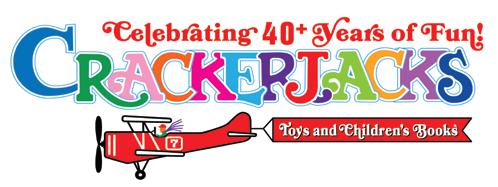
CrackerjacksToys.com
Try your hand at magnetic darts.

The room was growing warmer and the slumber more profound. The came at length for the climactic speech; the Colonel trundled or waddled to the front, and began:
“Staunch sons of Maryland, my friends and brethren, you the voters are the bulwarks of our noble state.” The meshes of the Colonel’s net were large. He was expecting big fish. As he spoke he grew warm and rounder, and Fayette and his son had begun “sawing wood.” The Colonel knew someone had blundered, but had not thought of the fire, nor had anyone. He elevated his sonorous voice. Fayette unconsciously echoed more loudly, and startled at times would be aroused and unintelligibly speak out in meeting.
To awaken and enliven all, the Colonel shrewdly hinted at a reward for the faithful, and declaimed against the devastating high tariff which would effectively shorten the tops of their high boots which all so greatly needed. The price of leather would soar.
Fayette dangled, half awake. The Colonel sensed that preceding speakers and even he himself had failed to make the tariff subject plain and tangible to his hearers, and he thought it would be expedient to illustrate with simple everyday matters pertaining to the home.
Such a course would, he thought, surely being that stimulating and encouraging round of applause of which he began to feel the need, so he determined to make a homereaching illustration of the monstrous effects of the high tariff, and then to close the meeting, leaving the knowing ones to come, then, and barter votes for boots; so he continued his closing remarks, “You know my friends that we all are prone to lock the stable after the horse has been stolen. If only our people could become awakened in time to realize the injustice of these tariff laws that plunder us all, and tax all the people, all industry for the benefit of a few, or a particular class! Friends, after election it will be too late to lock the stable.
“NOW is the time to scotch this


greedy monster. Do we realize how intimately tariff puts its hand in every pocket, enters every home and demands a toll on every purchase, and lays a clutching hand on house, furniture, food, and raiment? Just as a miller takes a toll of wheat or corn for every bushel, so this highwayman tax takes toll of all you buy.
“Did I say it taxes every thing you buy and use? Just think, for instance, there are matches; you cannot light a fi re or a pipe but you must pay toll for the privilege. Yes, and more! There is salt.
“Every food needs salt—your butter, your meat, your vegetables—and good old turnip greens.
“To make them savory you must have salt—Matches! Salt!”
Just then Fayette, almost awake, called, “What’s that you said? Matches, salt—pay for them?”
“Yes, my friend”, cried the Colonel “all that your use, even your matches and salt.”
“Heck!” cried Fayette, rousing from his stupor, is that all you got to say? Matches? Salt? Heck!
“As for matches we kin git all we
want give to us; and as for salt, this whole blame mash is salt, an we ‘uns has all we kin do to keep out of it.”
There was a roar; the meeting was ended; and sadder and wiser was the rotund Colonel, as he drove his horses homeward.
So ended the campaign in that district.
A wire puller was someone who used secret means to influence a person or an organization.
big gun,
“Big Bertha” was the nickname of a huge German howitzer, one of the biggest guns in the world then. Sentiment formers, someone whose job it was to shape the political opinions of the voters’ big gun
loud speaker, in the days before electricity, a loud speaker was literally that- someone with a loud speaking voice.

James Dawson is the owner of Unicorn Bookshop in Trappe.



Roger Vaughan
This couldn’t happen again. Commercial fishing on the Northern Edge of George’s Bank was stopped in 1994 to protect the habitat for spawning Cod and other bottom-dwelling fishes.
It is midwinter of 1980, and the forecastle is full of blue smoke. For the past three days, I have been on board a 95-foot steel fishing trawler out of Gloucester, Massachusetts. Its name is the Joseph & Lucia II. For three days we have pitched and rolled with sickening certainty through seas that have never been lower than eight feet, buffeted by
winds that have averaged eighteen knots, as the boat has towed its heavy gear at the miserable speed of three knots over the bottom of Georges Bank, 160 miles east of Gloucester. Three knots means the seas and wind have their way with the trawler.
Three days. It has seemed like three weeks. Worst of all is that

six more days remain until the trip will be over, until the Joseph & Lucia II will put in at Boston to unload, nine or ten days being the safe limit that the first fish taken will stay fresh on ice in the hold. Six more days. I am considering that fact the way one might contemplate entering a coma. It presents a comprehension problem.
I am lying on a bunk in the forecastle, a bunk dusted with amazing amounts of Rigident dental powder by the previous occupant. The man must have taken dust baths in the stuff. It is everywhere. My knees are bent to their fullest, trying to keep contact with the overhead so that when the bow drops suddenly 10 feet or more, leaving me momentarily weightless, I will not float off my bunk to be smacked down when the boat bottoms on the trough.
Now I feel sick. The blue smoke isn’t helping.
I am considering that fact the way one might contemplate entering a coma.
The forecastle is full of blue smoke because Peter Ferrante is frying fish in corn oil on the blackened Shipmate diesel stove that doubles as a heater. It is not easy to control the heat of the overworked Shipmate. The fish are in a frenzy of sizzling. Only five of us are living in the forecastle. The engineer and his mate sleep aft, next to the roaring 680-horsepower Fairbanks Morse opposed-piston diesel that never stops. The skipper has his own bunk behind the pilothouse. That makes eight men total, leaving three empty bunks in the forecastle that are littered with canned food, life jackets, boxes of rubberized gloves, personal belongings, girly magazines and eight identical white gym bags containing eight survival suits that no one has ever tried on.
One speaks of the gravity of a situation. I expect I am sustaining several Gs at the bottom of the bow’s arc. Each time the bow drops into a trough my eyeballs recede into my skull with dull pain. The flesh on my face sags toward my ears. My stomach sinks toward my backbone like a compressed bellows. I have been sailing on the ocean for 30 years, in all manner of vessels, and have rarely felt sick.
Peter has turned on the fluorescent light over the table and has laid out the tablecloth, plates and silverware. Someone has gone on deck and opened the vent so the exhaust fan can be started. The blue smoke begins to clear. I focus on the painted pegboard ceiling, studying the now familiar pattern of oval-head screws set into their finish washers and wondering what day it is. My watch indicates 5:45—a.m. or p.m.? Peter wouldn’t








fry fish for breakfast. It must be evening.
The men gather. Four are named Branceleone. The Joseph & Lucia II is a Branceleone boat, one of two the family owns, and it is named after the elders of the clan. The skipper is Nino, an intense, quiet man. The engineer is his youngest brother, Joe. Both were born in Sicily and came to America in 1937. Joe’s 25-year-old son, a serious, ambitious man called Giuseppe, is the engineer’s mate. And then there is Tommy—19, a nephew, a deckhand trying hard to work his way up. Peter has been keeping it light, cooking and raving and complaining and telling a lot of good
stories about selling vacuum cleaners—his other job. Peter tells about the old Electrolux he is rebuilding. He says everyone needs a vacuum cleaner. We agree. He says vacuum cleaners are going to save his ass. Peter is 35, Sicilian-born and looks like a member of the fifties-style rock group Sha Na Na.
Jackie Battista is in the pilothouse, standing watch until Nino finishes eating. Jackie, the deck boss, is known as Iron Man— meaning he was around when the going was tough, when Marines would have been put to shame, as Peter says. No one mends torn nets any faster. Jackie is the first one on deck, the last one off. Jackie went fishing on his honeymoon, anchovy fishing out of San Diego. His new



wedding band got caught in the net, was pulled off his finger, and fell into the Pacific Ocean. Whenever the story is told, Jackie just grins and talks about how lucky he was not to lose the finger. Jackie lives on fish, bread and butter, and Empirin compound. One morning at about three o’clock, Jackie celebrated the end of a long watch with a cold catfish liver sandwich.
Peter has fried up some delicious fresh codfish, but it is not a meal to be enjoyed. It takes both hands to keep the plate on the table, and a lot of will not to bolt for the deck and a reviving blast of cold winter air. Nino wolfs down his meal in five minutes, grabs an orange and then leaves for the pilothouse. He is in charge of this hunt, and the fish don’t respect the dinner hour. All the problems of the hunt belong to Nino. It was Nino who was most hurt by the mechanized Russian onslaught that for years decimated George’s Bank with oversized trawlers. It is Nino who will still have to find fish once oil drilling platforms begin to appear on the precious Bank; Nino who will have to thread his way through the traffic of oil-related vessels and continue to find fish regardless of what further calamity might be perpetrated upon one of the world’s
most fertile fishing grounds.
Peter has fried up some delicious fresh codfish, but it is not a meal to be enjoyed.
The boat and the men depend upon Nino, and he is one of the best. He and his brother Tom, who runs the other Branceleone boat, the Joseph & Lucia III, are Gloucester’s high-liners (top skippers). In 1978, when the fishing fleet was threatening to blockade the port to protest government quotas on haddock and cod, Tom stood up at an emotional fisherman’s meeting and announced that the next day the two Branceleones were going fishing. The fleet followed. Nino wants every trip to be his best, every haul-back to pile fish high upon the deck. One day when several consecutive sets of the net produced only a thousand pounds of fish or less, Nino’s appearance at meals was even more token than usual. One of the crew suggested that it was a bad day to talk to the old man. “He is distressed,” the crewman said. “You go up there and you would see him in tears of frustration.”
The crew told of the last trip before Christmas a few years back. Nino took sick. He was three days in his bunk. Joe was at the helm and decided to take Nino in. The boat was within two hours of the breakwater when the horn summoned all hands. Nino was back at the wheel, and he looked like a dead man. He had them set the net.

They stayed out an extra day. They got home December 24. Giuseppe says: “The Italian law says fish come first, then the men.”
The horn is blown by the skipper to let all hands know it is time to raise the net. It has an effect like the dive klaxon that used to chill spines in old submarine movies. Its pitch is somewhere between a fourth and a fifth above the thrumming diesel sound that doubles as a sleep inducer. Its effect is unmistakably urgent. It is the scream of a drill instructor, the arresting shout of a police officer. The nineteenth time I heard the horn in 68 hours, it filled me with profound depression: six more days.
For the nineteenth time we pulled pants over long underwear and sweaters over sweaters. Then boot socks and steel-toed rubber knee boots, foul weather pants and jackets, and hoods secured over caps with visors. We hung on with one hand against the violent motion of the boat and dressed with the other. The effort produced sweat and queasiness in the sweet, oily heat of the diesel stove.
Awkward with several pounds of clothing, we trudged up the ladder to the deck. The deck lights turned night into day. The wind was northerly at 15 knots, the seas four to six feet. The temperature was 24 degrees Fahrenheit, minus the windchill factor. We were on a section of the Bank called the Win -


ter Fishing Grounds on the Northern Edge. A combination of tricky currents makes it a relatively warm place. Hundreds of white seabirds seemed to float motionless on either side of us in the snowsplotched, velvety blackness. The bag of fish was big. About 5,000 pounds: mostly cod, haddock and pollack. There were also a few halibut, ocean catfish, skates, monkfish and a great variety of odd-lot items: scorpion fish, starfish, sea urchins that Joe would crack open and eat on the spot, sea cucumbers, scallops that were accumulated for dinner, sea clams, lobsters, hermit crabs, limpets, which the men covet for their taste and their supposed aphrodisiac properties, seaweed and the occasional tire or cold drink can. A whole undersea community.
the net on the other side.”
Quickly, Tommy fetched the box of large plastic mending needles and twine.
Five thousand pounds. This would cheer Nino. But Jackie spotted a tear in the net. Quickly, Tommy fetched the box of large plastic mending needles and twine. Gloves came off. It is possible to mend nets with gloves on, but it takes longer. No trawler skipper would tolerate it—winter be damned—especially Nino. “In the old days,” Nino said wistfully “we used to have both sides of the boat set up. Then, if we got a tear on one side, we would set
It was a small tear. In 20 minutes, the net was back overboard and knives were being sharpened by hands on the painful verge of numbness. With more than 700 fish to handle, three of the crew began cutting in a frenzy. Their yellow rubber suits were quickly smeared with blood. They worked bent at the waist, laying open the bellies of the semiconscious fish with one deft stroke. In almost the same motion they heaved the fish into the next pen where Joe, Tom and I were sitting. Our job was to disembowel the fish. We would drape the fish across one knee, hang onto the gills with one hand, reach in with the other, grab the most solid thing we could feel and tear out the entrails. Then we would heave the fish—still flapping like a decapitated chicken— into the washing tank. From there it would slide down a chute into the hold, where Giuseppe would pack it in ice.
The job was called ripping fish. After one has done it for a year of two, or five or ten, they say it becomes rote, like any productionline job. But it gives most people a shaky moment at some point. Joe Michael, Nino’s son, who was slated for the pilothouse until he was beached by an injured disk in his back, says it happened to him after
several years. He was working away, cutting fi sh as fast as he could. Then he stopped: “I picked up this one fi sh, not quite dead, and it looked female to me, something about the eyes. I couldn’t cut it.”
I’ve cleaned my fair share of fish. It was the quantity that was staggering. The quantity, and the size of the cod, some of them 40 or 50 pounds or more, that spilled 15 pounds of entrails upon the deck. After a dozen sessions in the gutting pen, I became increasingly apprehensive about the process. The cuffs of my sweater began to stink ever so subtly. It explained the strange, heavy odor that permeated the forecastle. My right hand began to cramp from being used
continually as a ripping claw. Giuseppe said he had often seen his father’s hand twitching while the old man slept. After a dozen trips to the fish-ripping pen, after I had personally removed the entrails from several hundred fish, after the haul-back horn began to fill me with dread, after the fragrant cuffs of my permanent sweater began to color my dreams, I took a codeine pill and slept through two shifts. What the hell, I was a guest on board. I didn’t have to gut fish. But of course, there was nothing else to do. And there were six more days.

-Photos by Roger Vaughan
Vaughan.roger@gmail.com


306 Maple Ave, Easton - This custom home in downtown Easton offers convenient one-story living with 3 bedrooms, 2 baths, spacious living, dining & family rooms plus private office/den and large laundry. It’s conveniently located near Rails to Trails, Idlewild Park, and the YMCA. The property includes a large 2-car garage with an attached 19x10 workshop and a garden shed. Call for additional details! $649,000

29705 Apple Dr, Cordova - Private country setting close to Easton amenities! Located in popular Fikes Orchard just a few minutes off Rt 50 enjoy this beautiful 3-bedroom, 2 full bath home sited on over 1.8 acres with abundant greenspace, mature trees and beautifully landscaped grounds. Contact Janet for more information! $475,000





Private 4,250 sq. ft. home on deep sheltered cove of the Tred Avon River, minutes by boat from Oxford, the Choptank and Bay beyond. Substantial pier with boat lift. The house features huge porches, great-room with vaulted ceiling, gourmet kitchen open to family area, dining room, media room/ library, first floor bedroom with modern bath and 10x14 walk-in closet; three bedrooms, two baths and exercise room/playroom up. Attached twocar garage. Pool. 3+ acres of lush grounds. Just reduced from $2,900,000 to $2,625,000


One-story residence located in top estate neighborhood between Easton and Oxford. House requires full renovation. Dock with 3 to 4 ft. MLW. Riprapped shoreline. 2 acres of high ground with mature trees. Reduced from $1,450,000 to $1,360,000. Please call for details.




